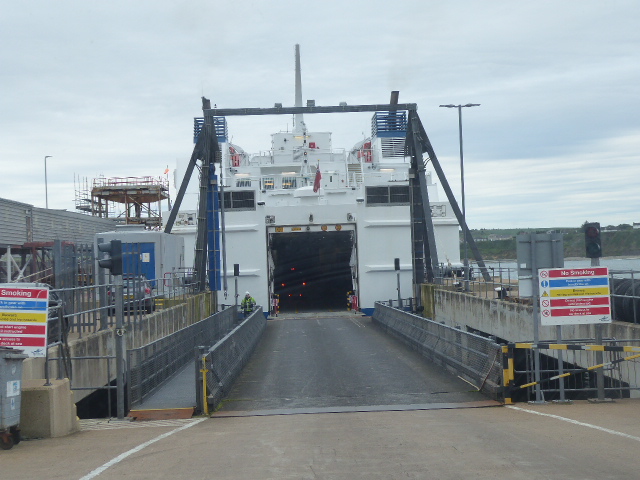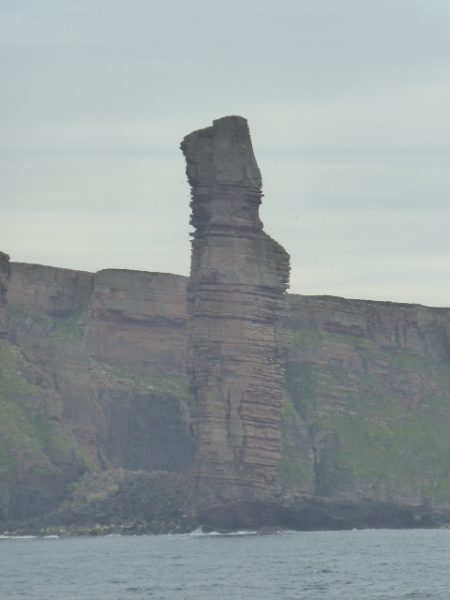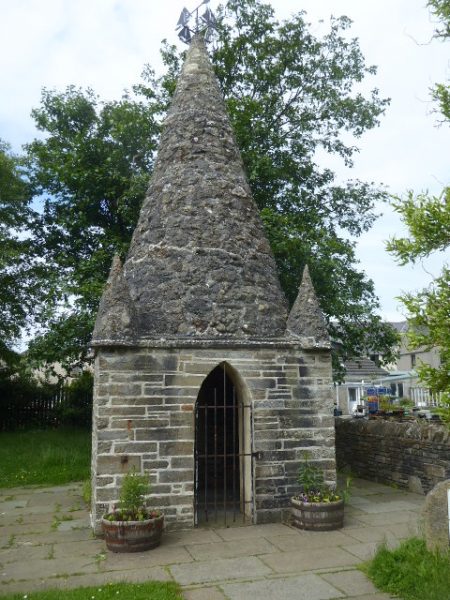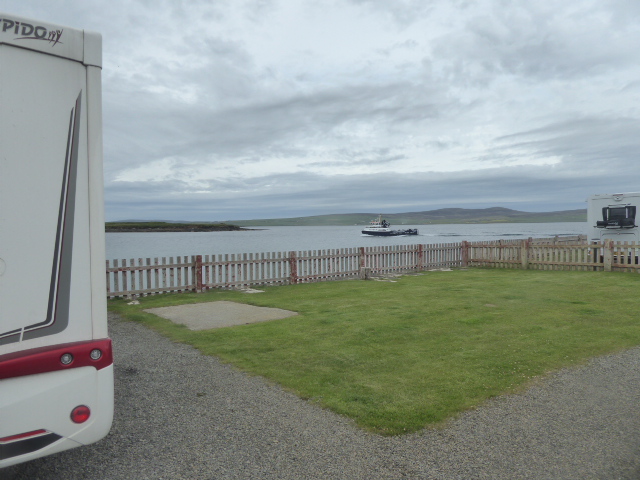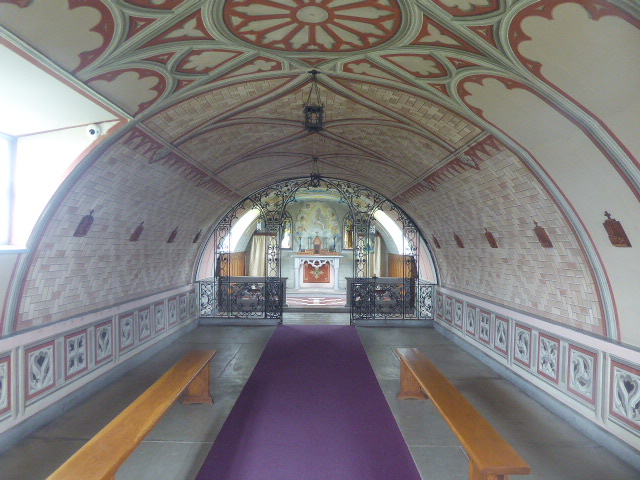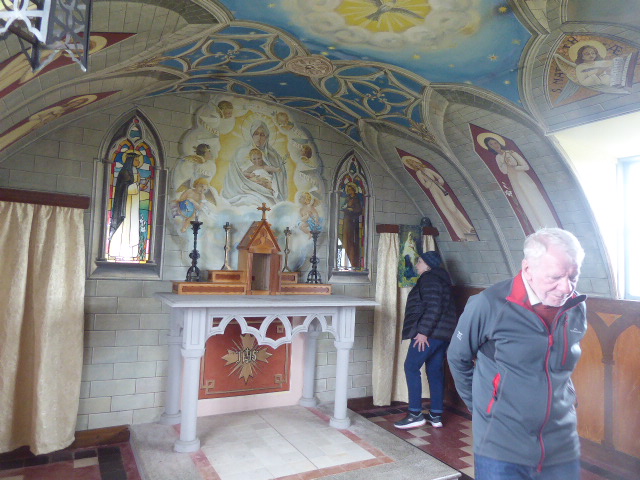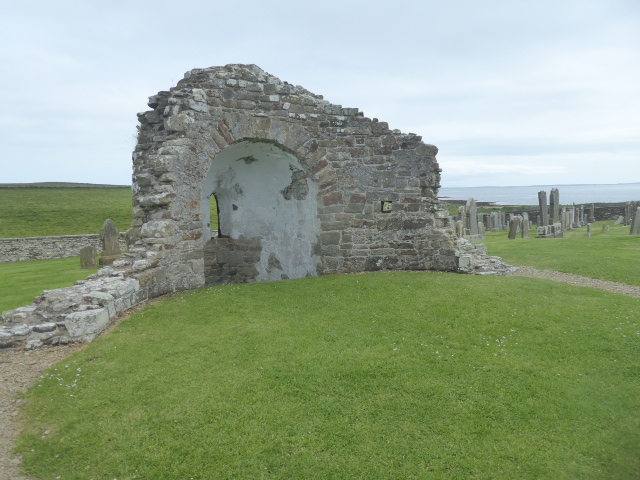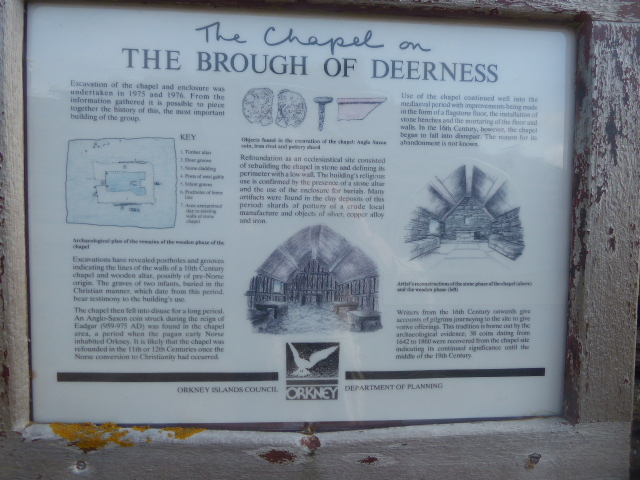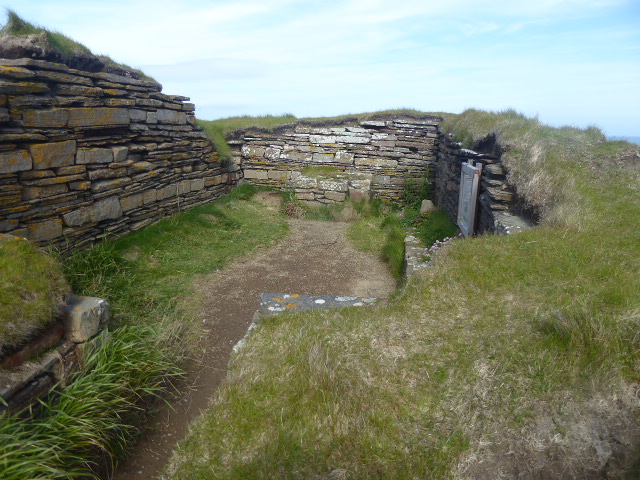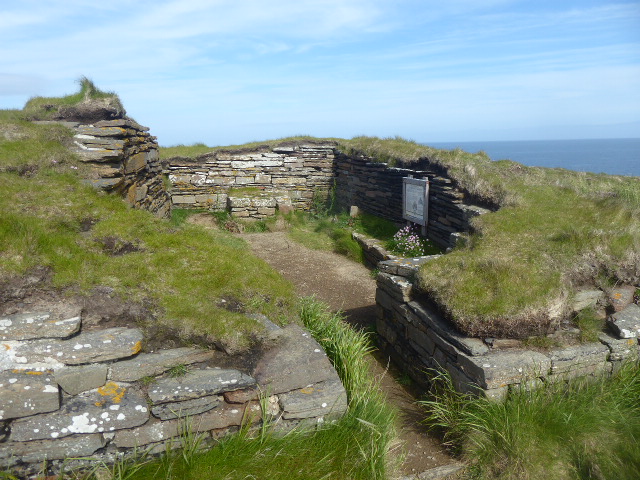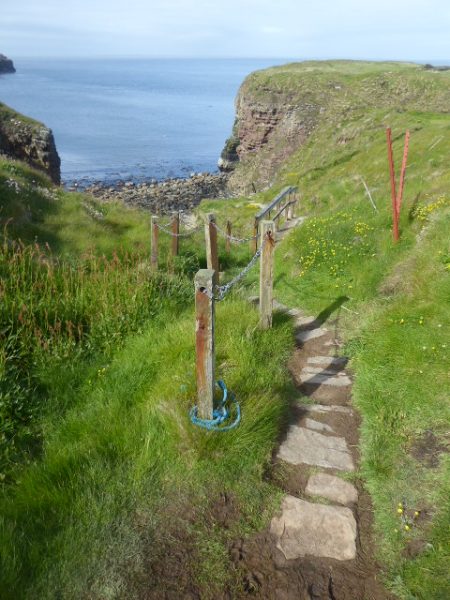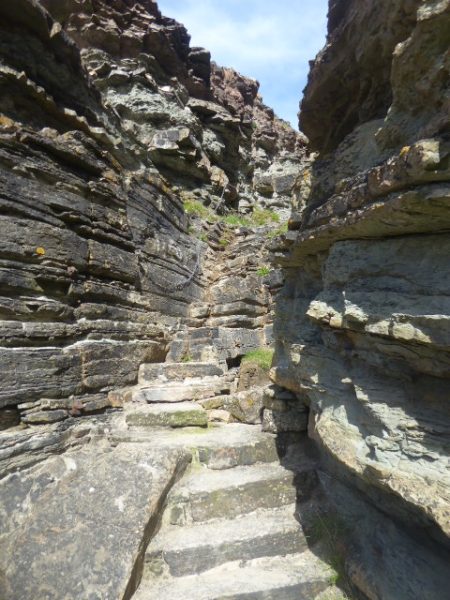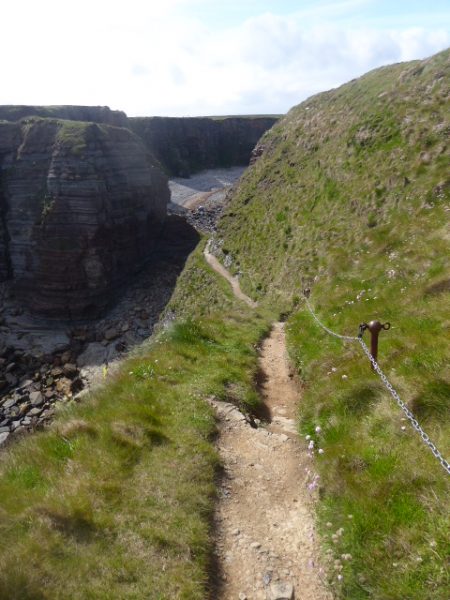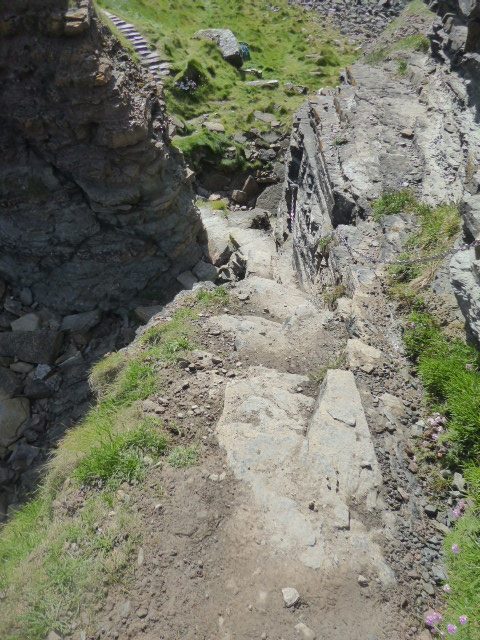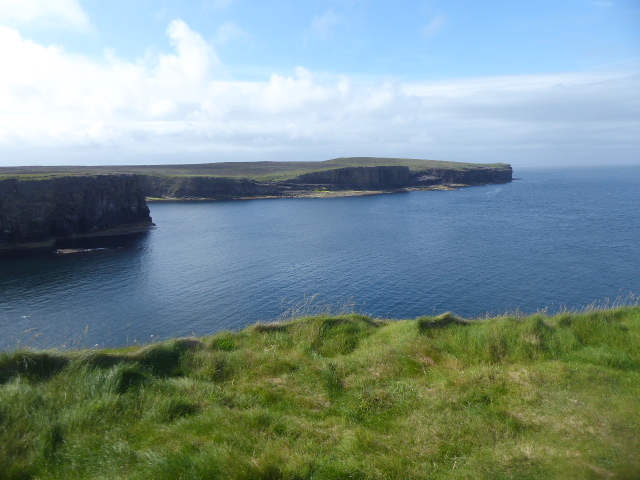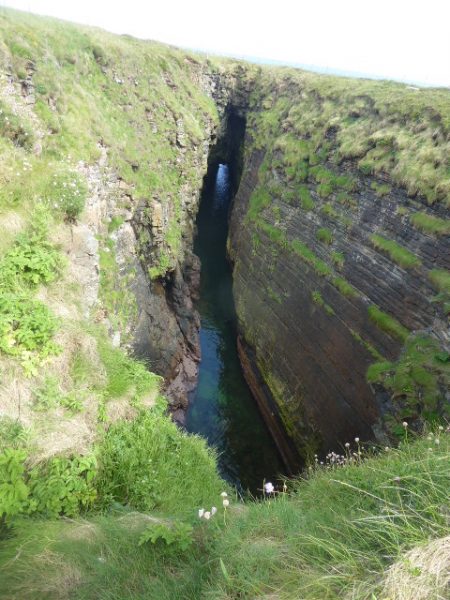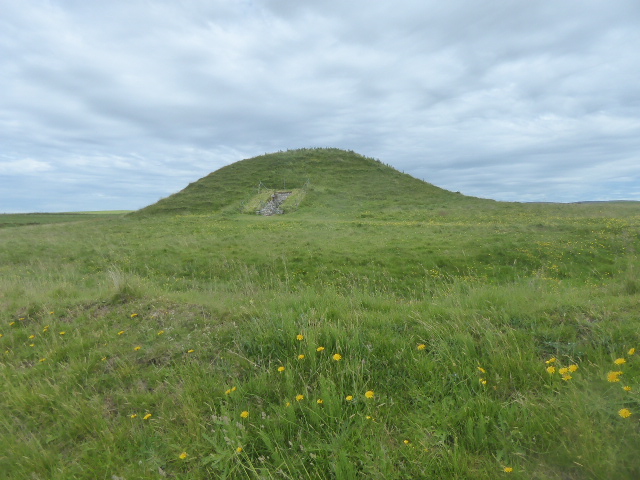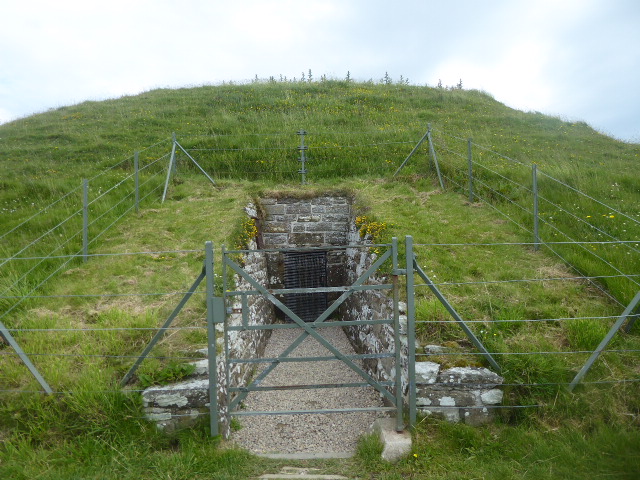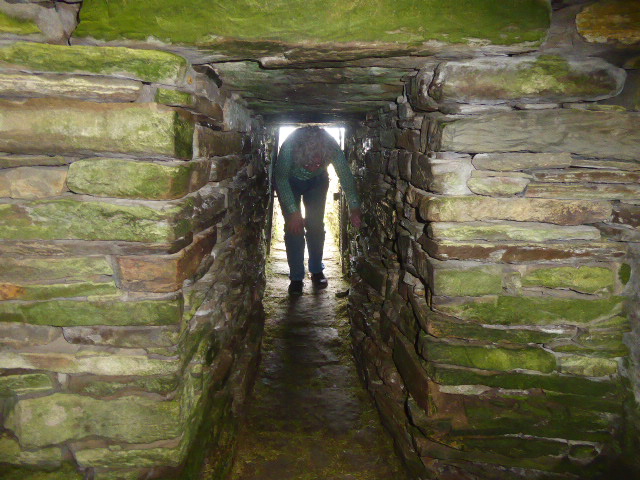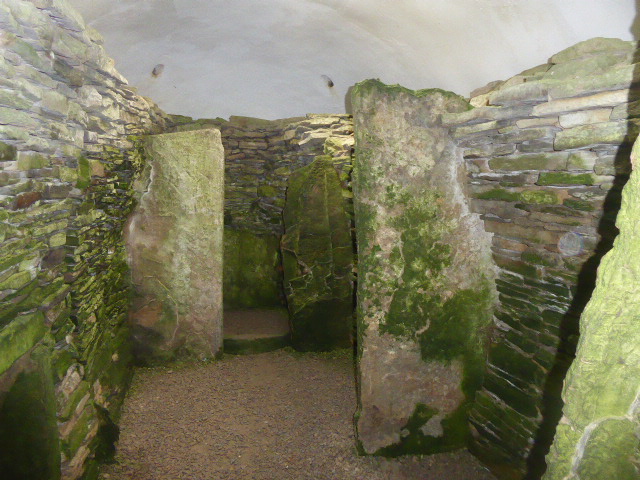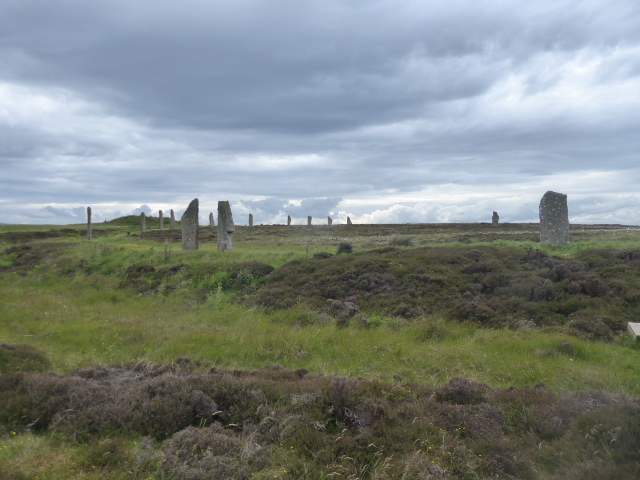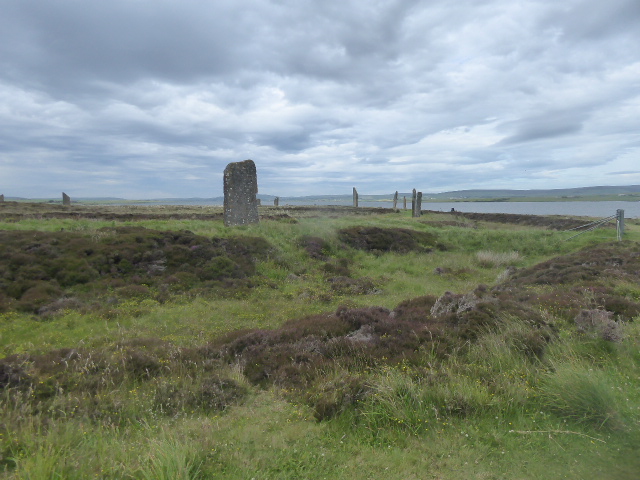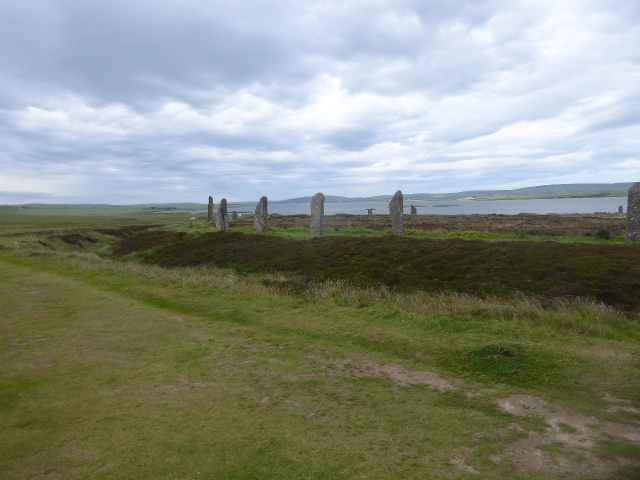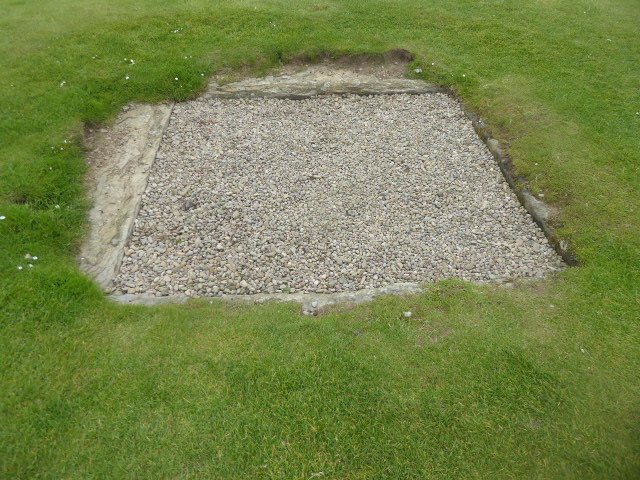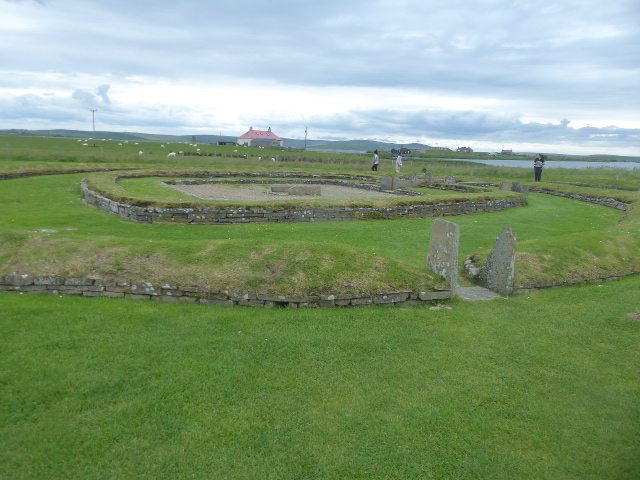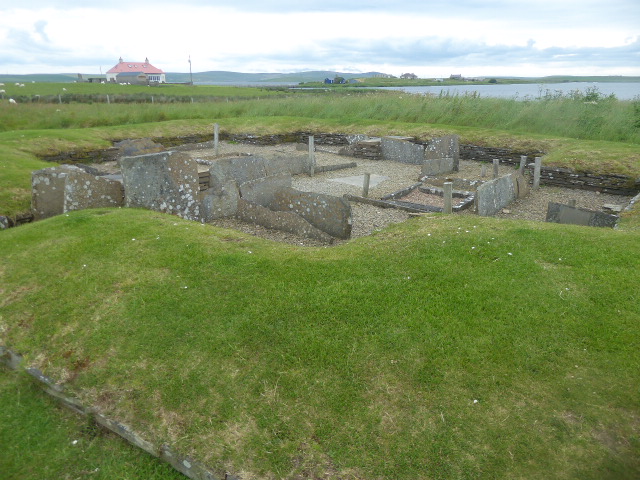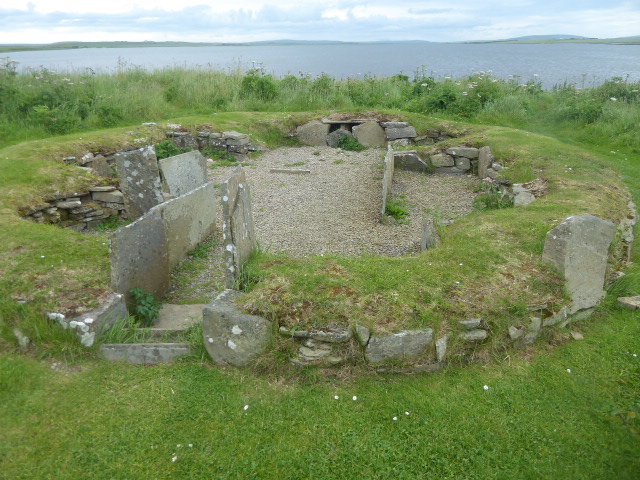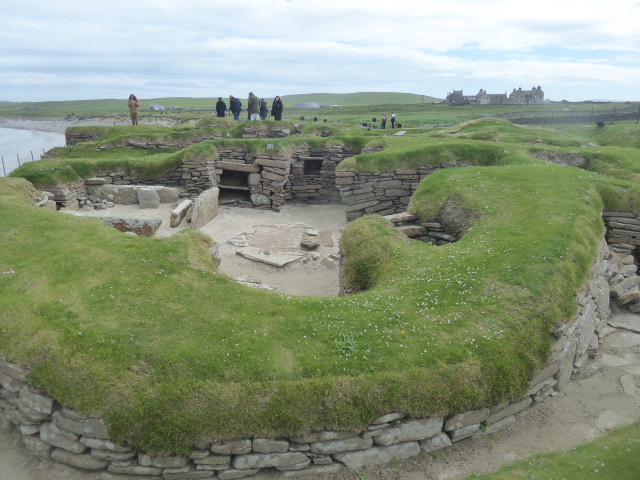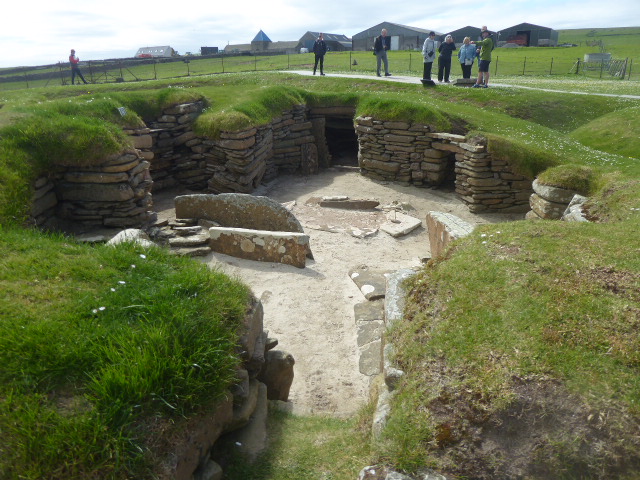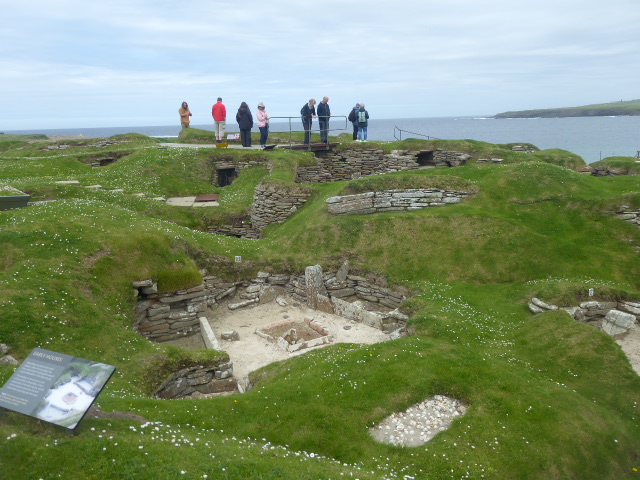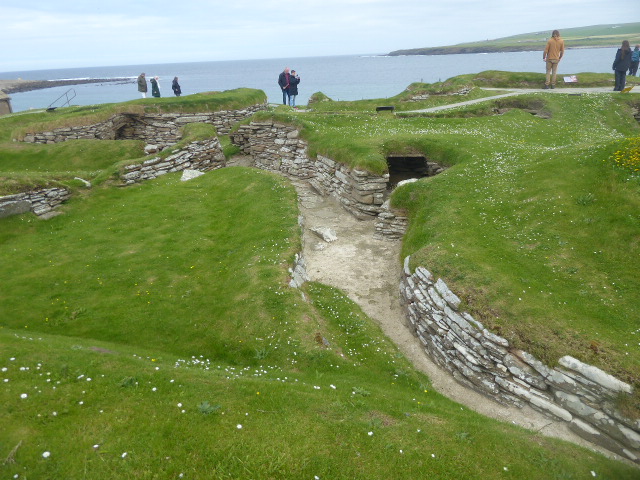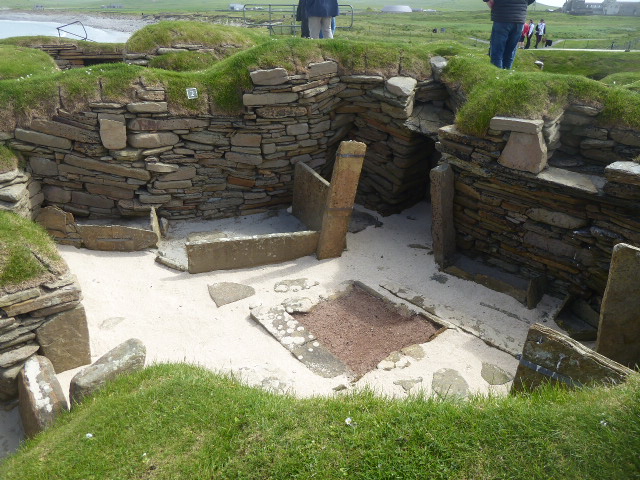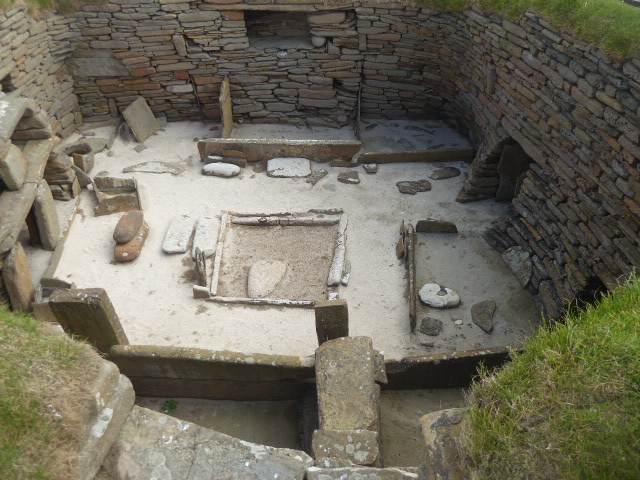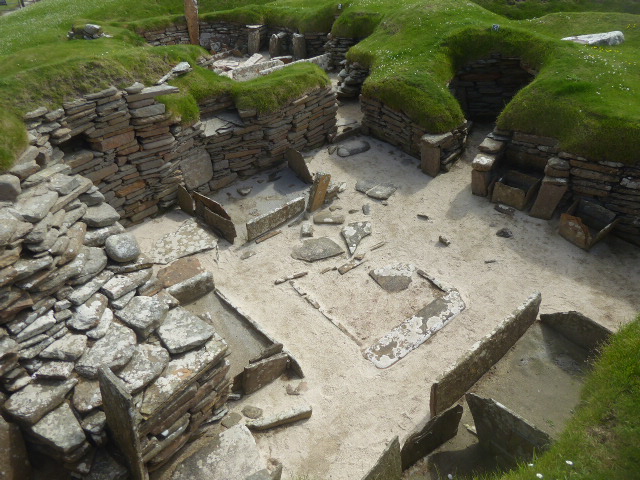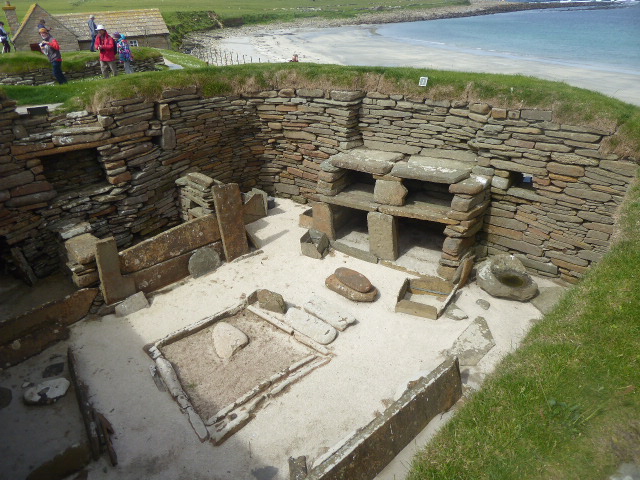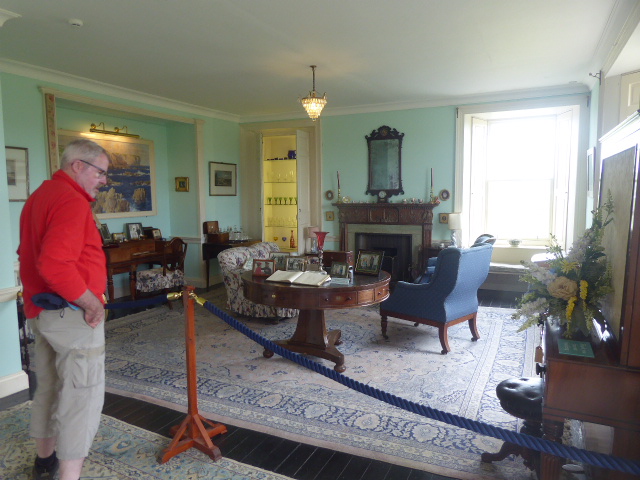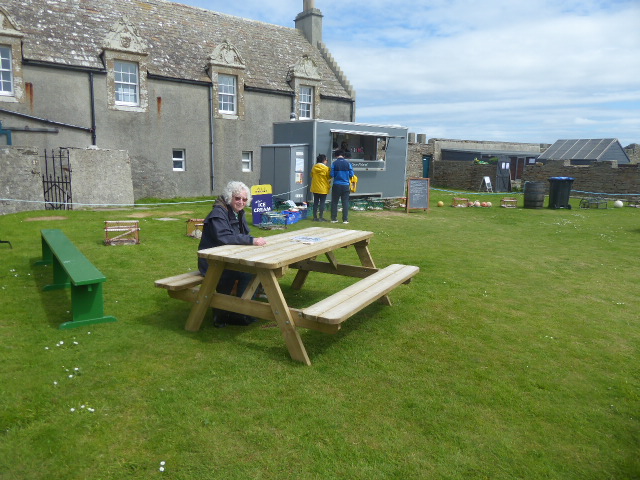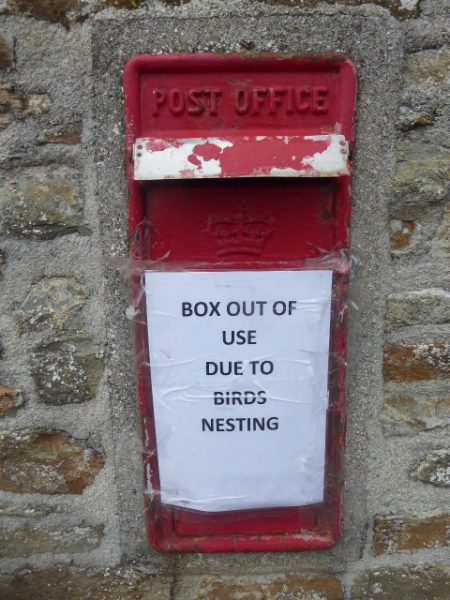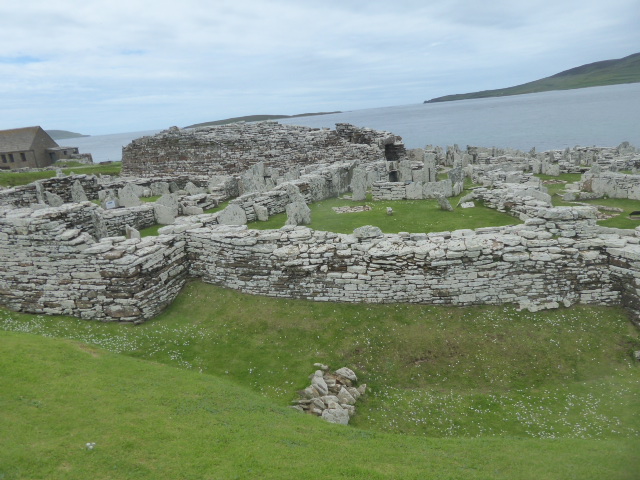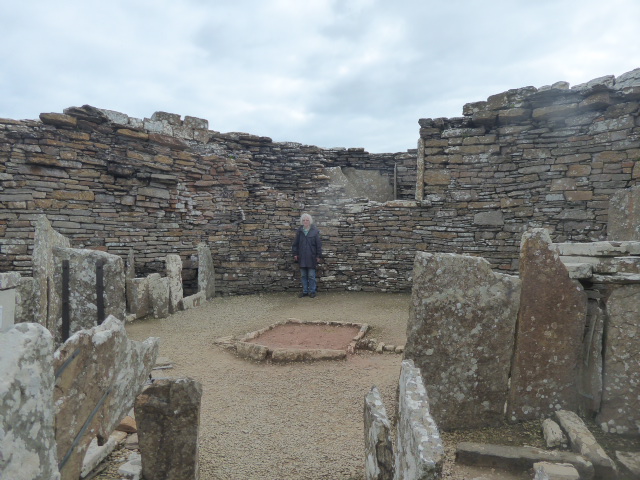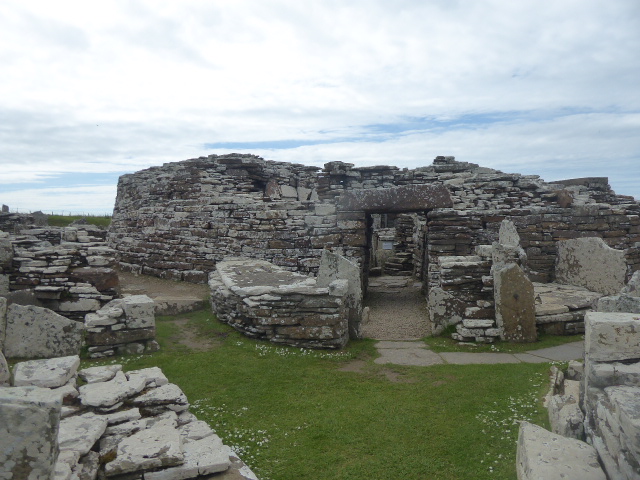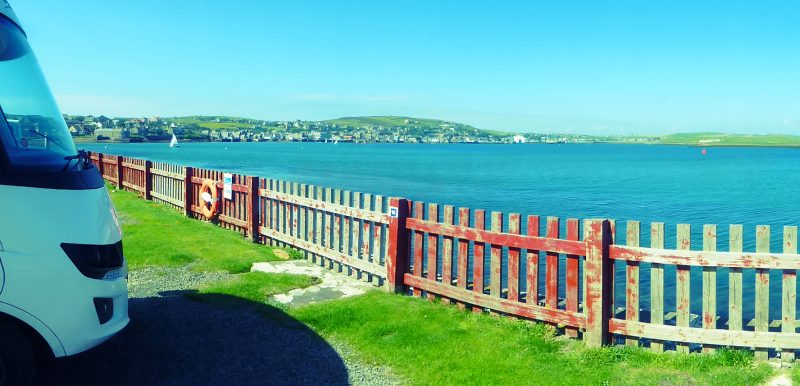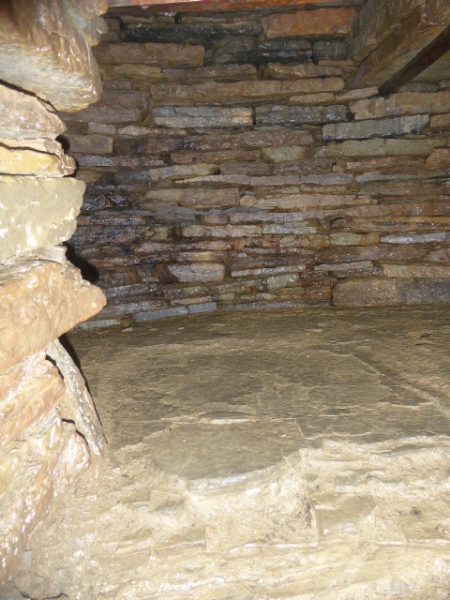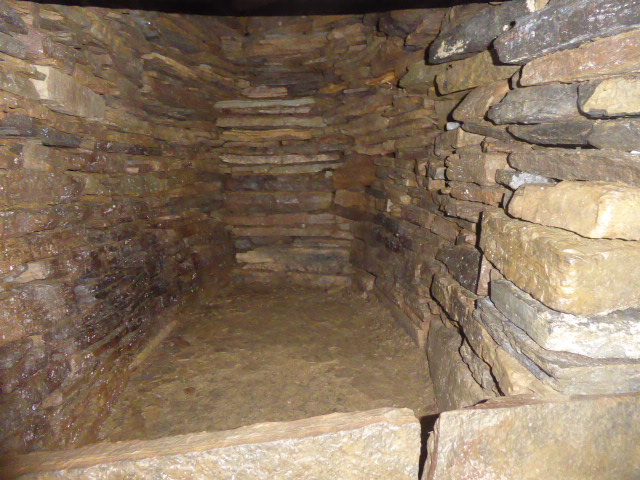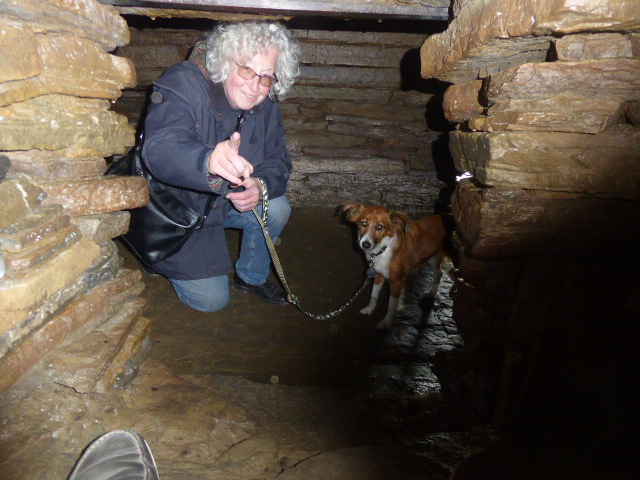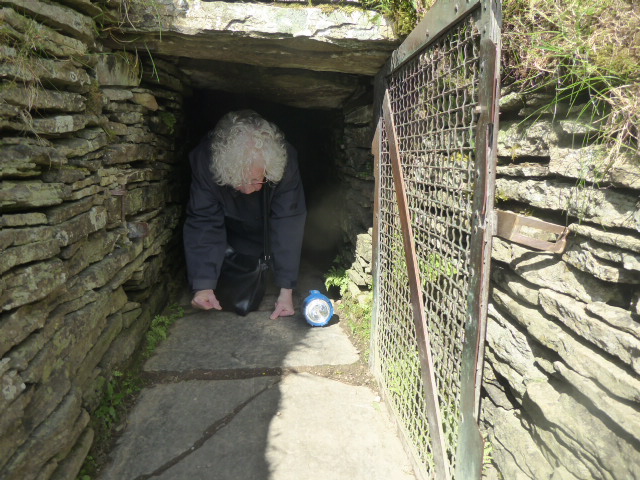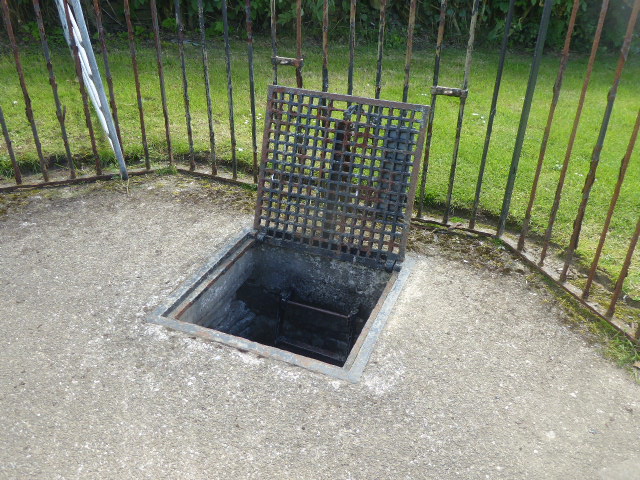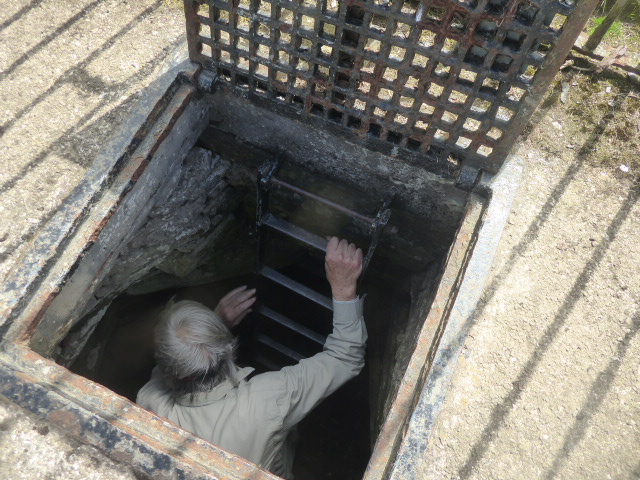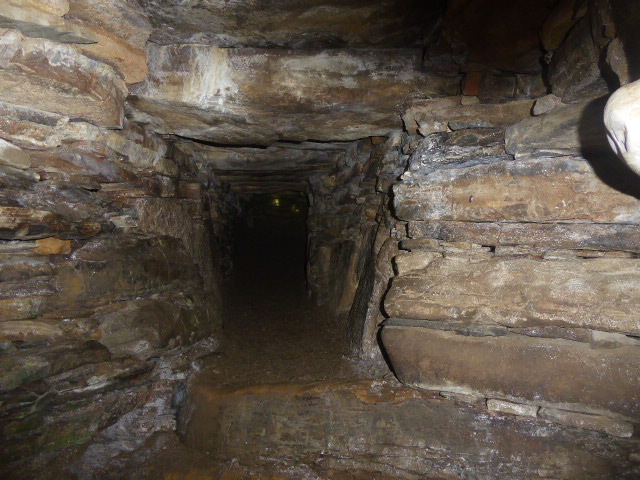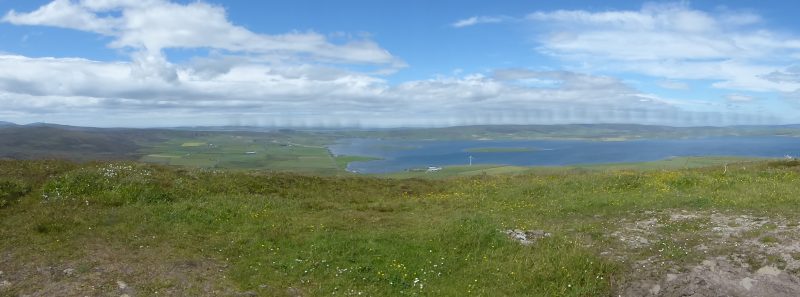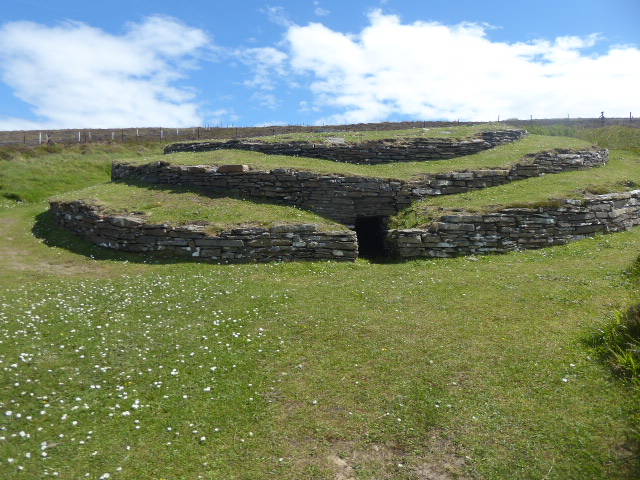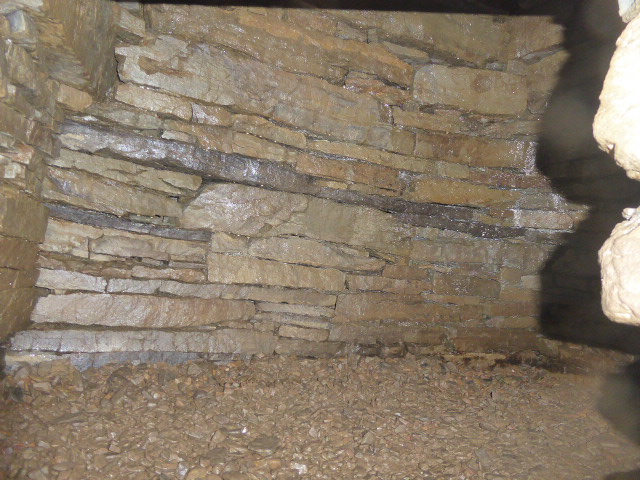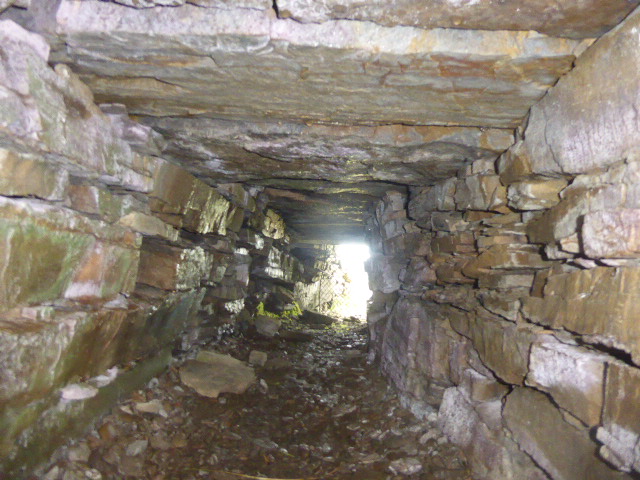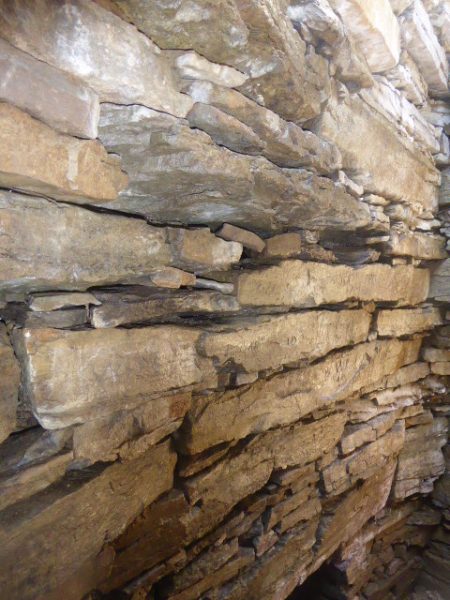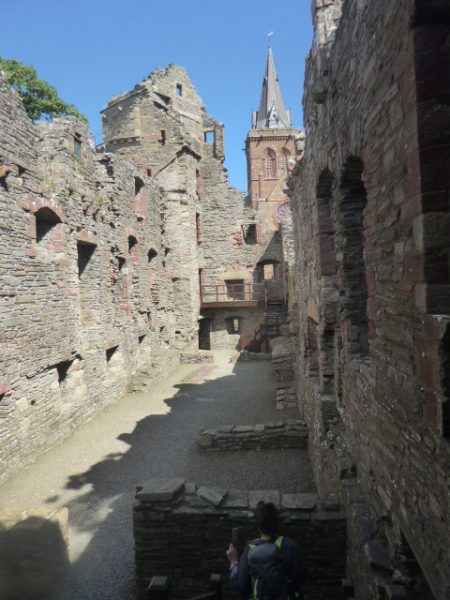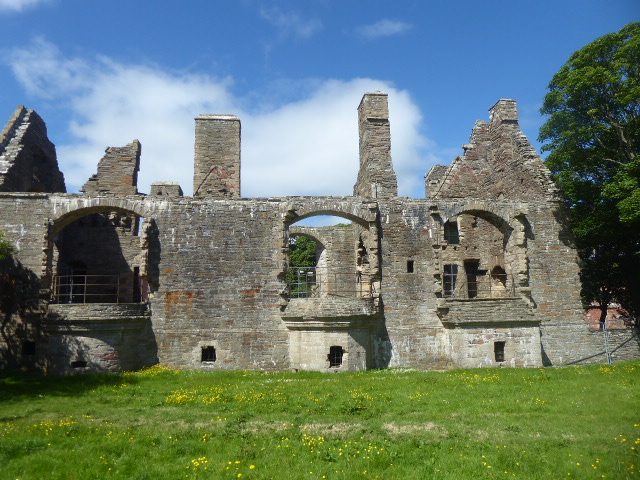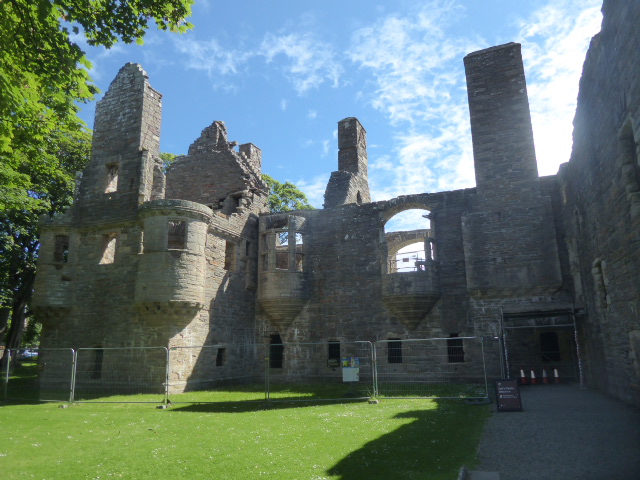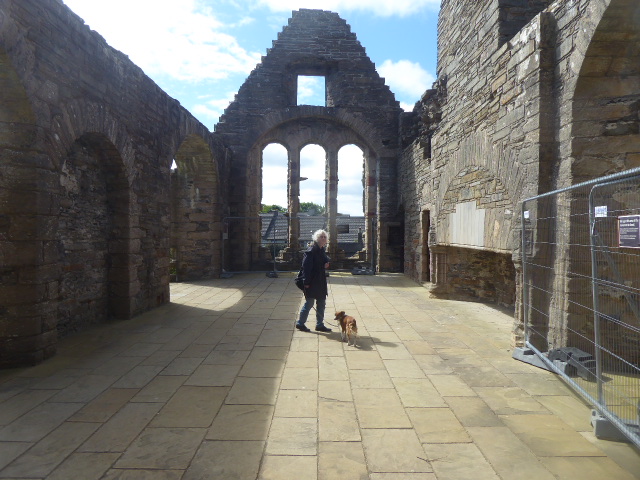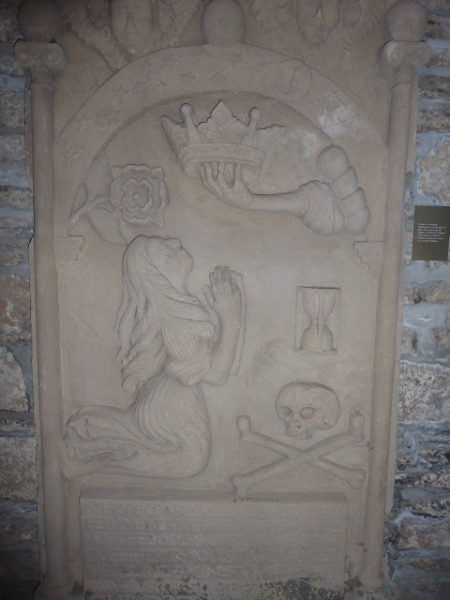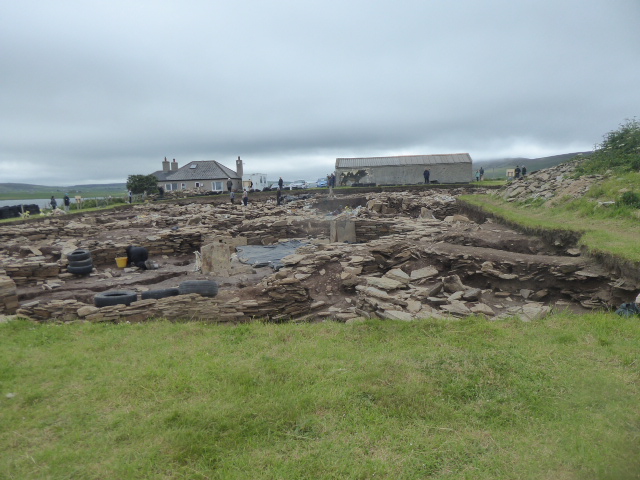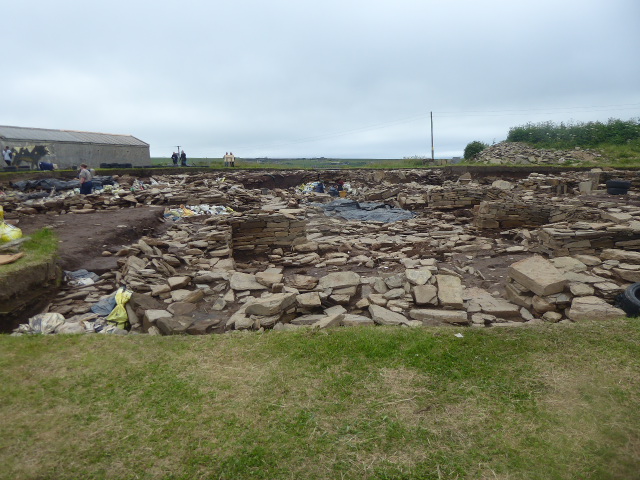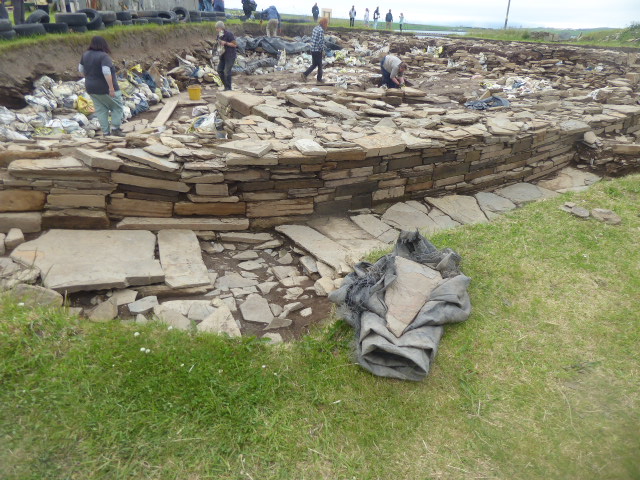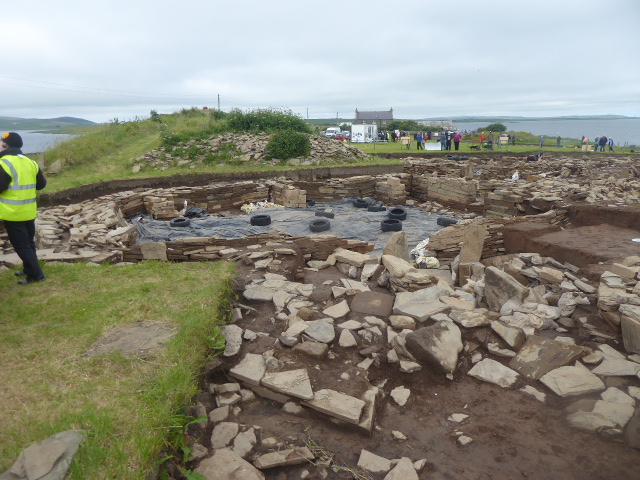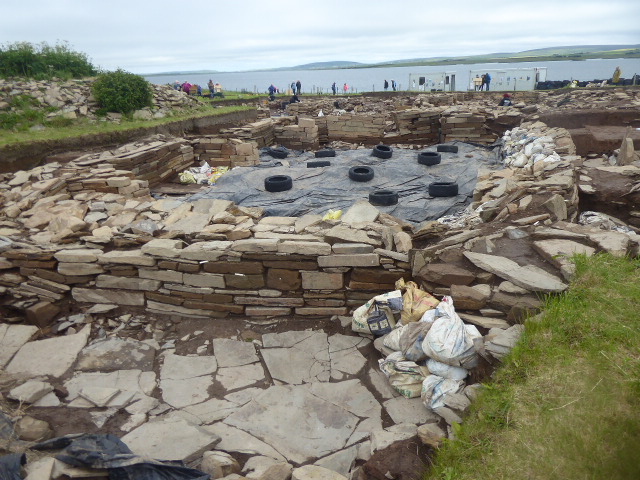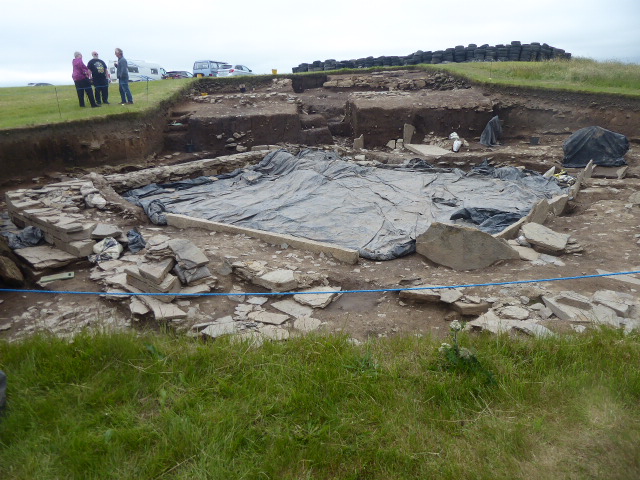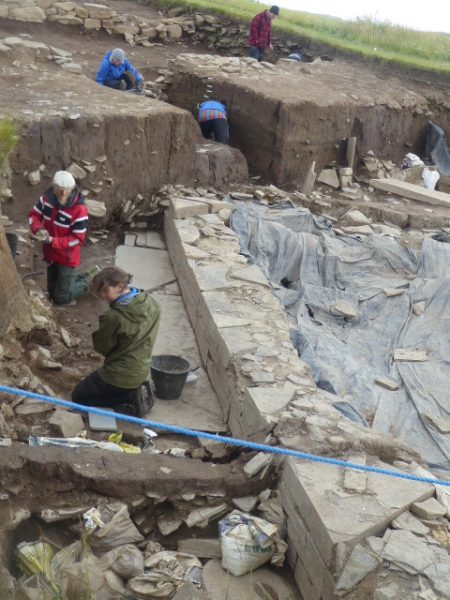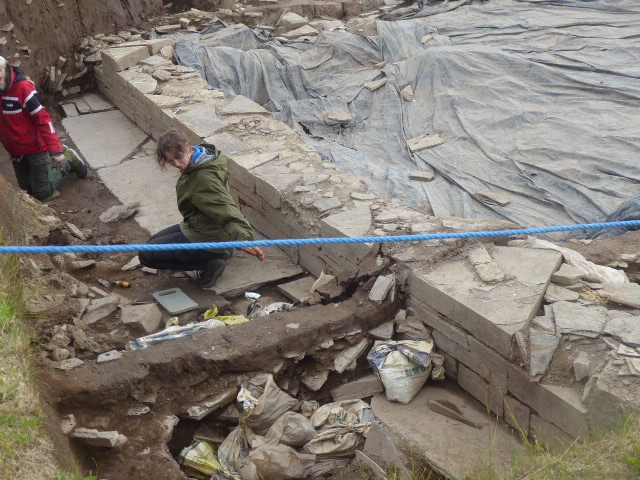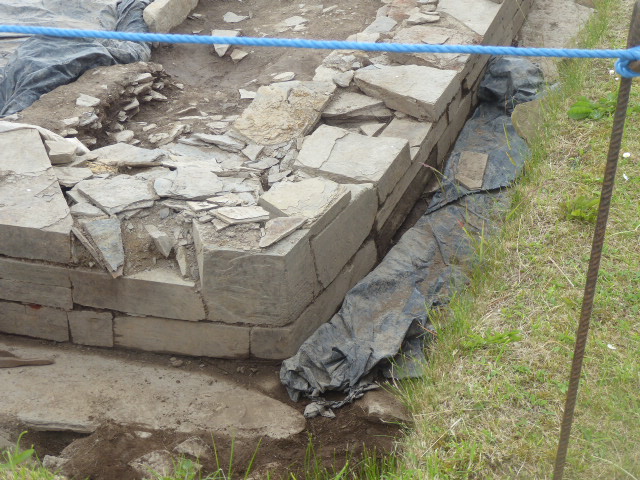2024 short-trips-orkney
Click HERE to jump to LAST post
- Sun 16th JuneWe’re off! Much anticipated trip to Orkney, a trip we have wanted to make since a day trip 27 years ago.
Left Brighton about 1.00 pm, to the very convenient (and very friendly) CL near Newark. A monotonous journey we have done many times, lost almost an hour to road works and a queue for the Dartford crossing. Could, and often, has been worse, but still very frustrating. That’s now behind us, sun came out, and we had to switch the cab aircon on, rarely been used.
Found I managed to leave Josie’s dog lead behind. Improvised with a trouser belt.
Now parked up for the night, another rarity, sat outside to eat our tea in a glorious evening. Won’t last.Not exactly cloudless sky, but plenty of sunshine.
The owner of the CL told us that, since our last visit about a month ago, he has been approached by Gunn and Moore, to plant willow trees to make cricket bats. In about 20 years.
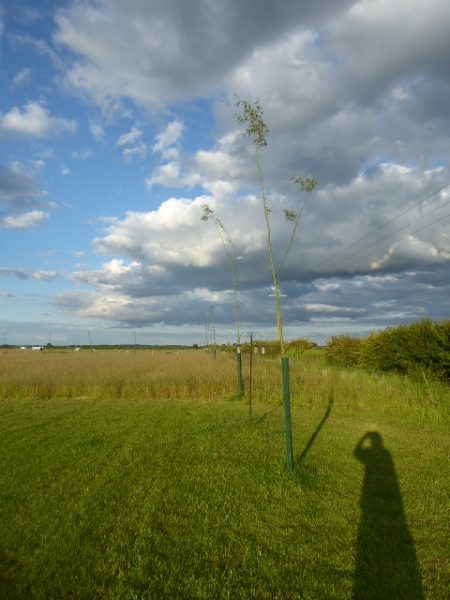
So, when England win the ashes in 2044, just maybe these trees will have played a role…..
He is delighted, the area is very flat and the soil is clay, and gets quite waterlogged. He is looking to the willows sucking up loads of water – apparently they are very thirsty.
Tomorrow is the new dog lead hunt……we have at least four at home. - Tue 18th JunDrove to Stuart’s, through occasional rain. Stopped for lunch in the Newcastle car park of The Emergency Dog Lead Shop.
Had a very pleasant late afternoon and evening with Stuart, sampled a Berwick upon Tweed restaurant, new to us.
Today drove up the east coast of Scotland after a slow crawl through Edinburgh, a lot a light rain, stunning scenery often hidden by low ominous clouds. If there were any mountains, they were completely obscured. What a pity, we have never driven up the east coast before.
Now parked up on a CL west of Thurso, run by a friendly lady.
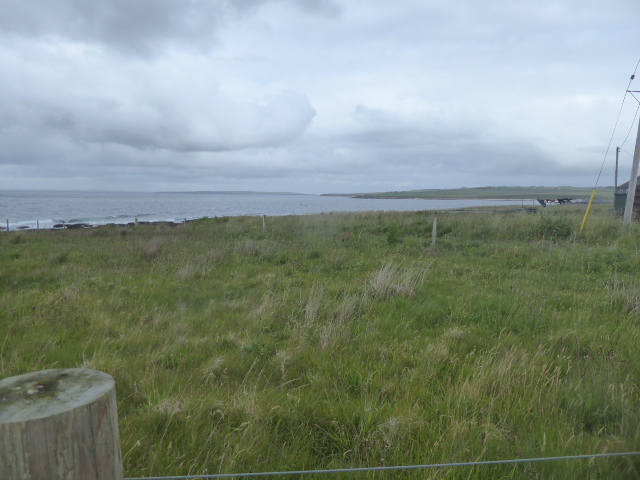
The view, and the view of the current weather. Leaves room for improvement……And, a cold biting wind.
- Wed 19th June
Early start for the 45 minute drive to Crabster to catch our 8.45 am ferry to Stromness. With the strong wind yesterday, I thought the crossing might be lively, but the wind this morning had gone, but not the comprehensive cloud cover, so a calm sea and fortunately no rain.
Into the black hole towards the bowels of the ferry.
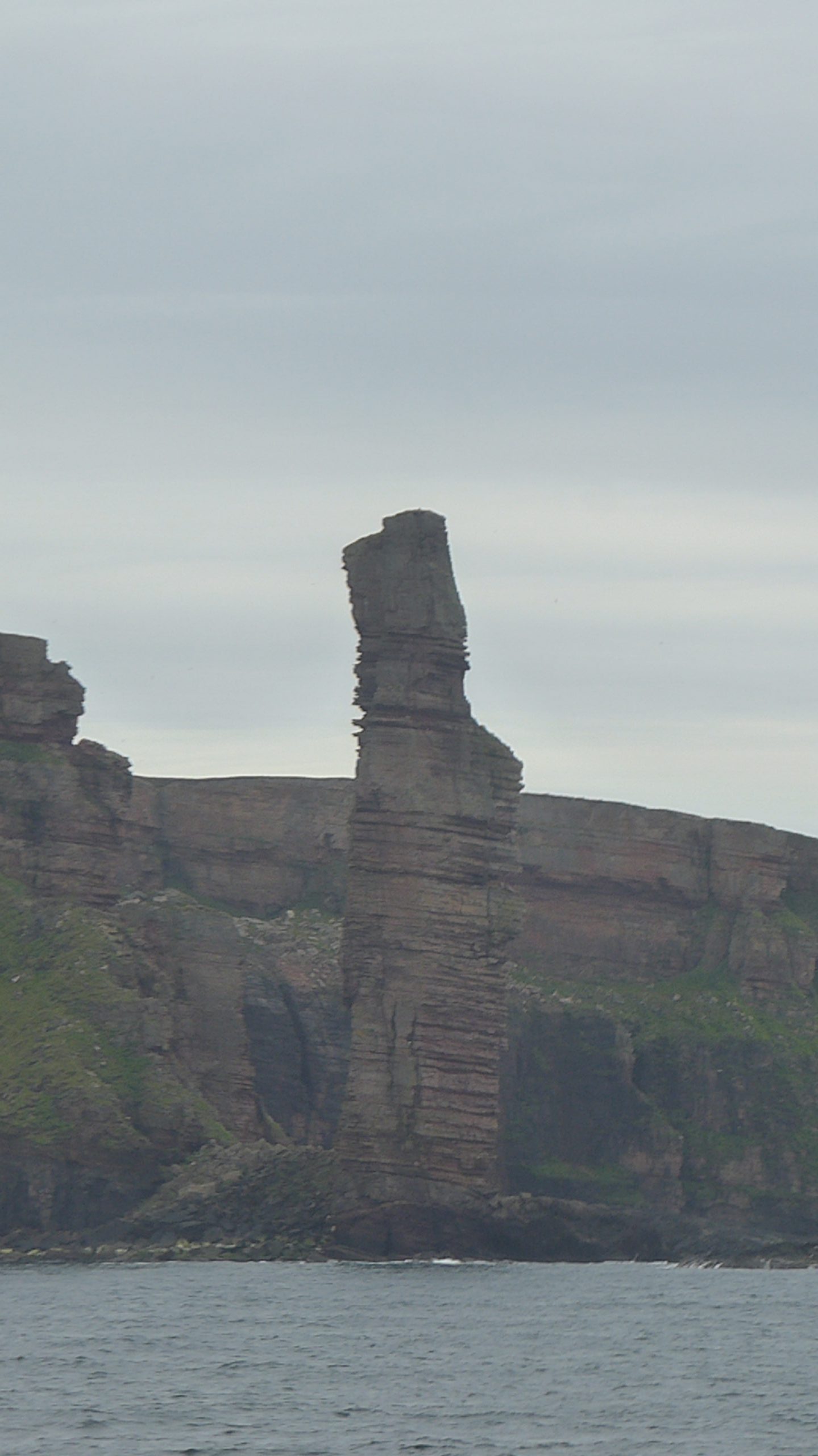
Passing The Old Man of Hoy.
As we could not check into the campsite until 2.00 in the afternoon, we drove to Kirkwall, and the tourist office. So much more helpful than those in Spain! Lots of useful information to mull over.
Then walked round Kirkwall, which I thoroughly enjoyed Sue complained about being cold.
We were told of an exhibition of artefacts from the astonishing Ness of Brodgar Neolithic site, fascinating. There was a great deal more in the museum, Viking, medieval, modern and 20th century, which was mostly Orkney in WW2.
No dogs allowed in the museum, but a rather nice garden entertained Josie and her minder. In the grounds was a Groatie Hoose.
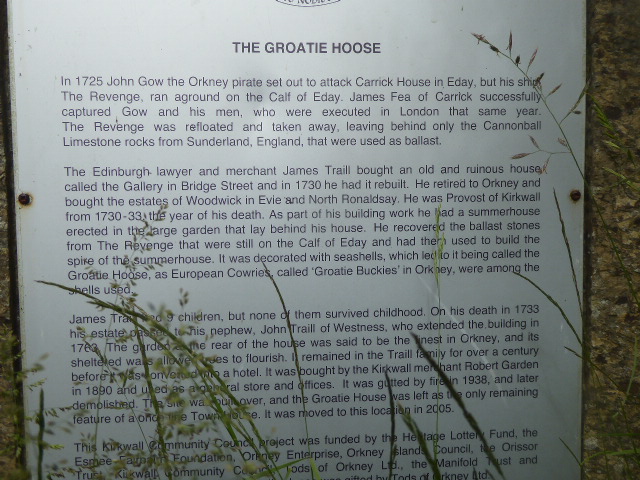
Then drove back to Stromness guided by the now working SatNav. Which took us alarmingly through town.

- LaterA prime position in the campsite, facing out into the bay.
The land to the right is South Ronaldsay, to the left is Mainland. Only in Britain would a small island off the coast be called Mainland!
For maybe the first time, I am very pleased to have electric hookup, as the weather is blinking cold, and there is no LPG available north of Inverness (where we filled up yesterday), so using electric heating, although not as effective as gas, is sufficient for a cold summer!
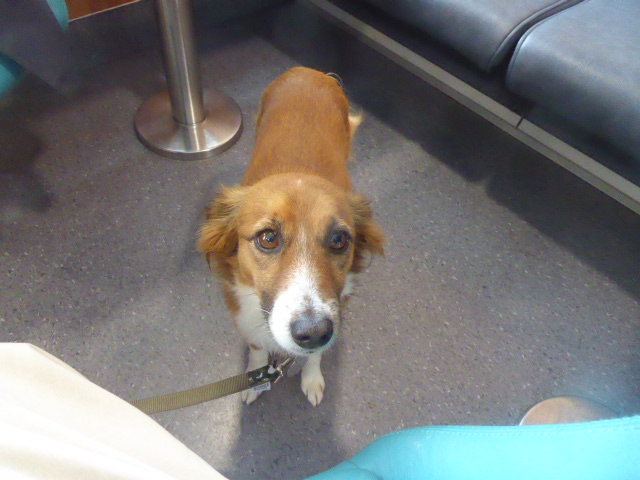
Another picture of Josie for good measure.
- A bit more later.Now evening, and it is blowing a hoolie. The vehicle is rocking insanely, and the sea has taken on a very different character. Clouds are scudding swiftly across the sky, and there appears to be an inexhaustible supply of new ones to take their place.
On the ferry, we met an Austrian couple in the dog lounge (people allowed as well), camping and travelling by motorbike with sidecar. They were also in Britain last year. Last year, they complained, the temperature was 34degrees, and no shade. This year, no shelter and nowhere to get warm! - Thu 10th JuneWind less strong this morning . Walked through Stromness, back down the road that was so alarming yesterday. Not nearly so alarming on foot. Looked in a few shops (there aren’t many), and ended up in the harbour, our destination for the ferry company booking office.
We have found that the next open tour of the Ness of Brodgar archeological site is the 26th June, two days after our ferry booking, so we have extended our stay, and are now leaving on the 27th June on the 6.30am ferry.
After lunch, drove to The Italian Chapel, two Nissan huts joined together, for the benefit of Italian prisoners of war, apparently mostly captured at Tobruk and Benghazi. The Italians decorated it, and it has been preserved. To get to it, we had to cross the Churchill Barrier, so called because Churchill ordered it built after a German U-boat sunk HMS Royal Oak, with huge loss of life.
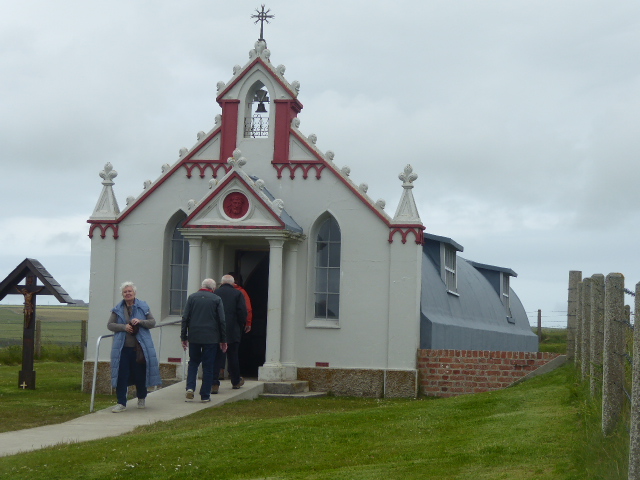
We had been here before (27 years ago), and it was not at all as I remembered it.
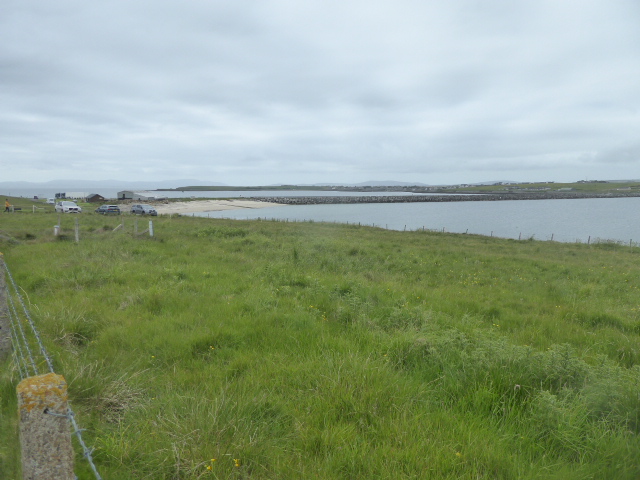
The Churchill barrier (one of them), from the Italian Chapel.
Thence on to Orkneyinga Saga Centre, and the round Kirk.
Somewhat underwhelming. Dates from around 800. We only glanced in the saga centre, a lot of information boards.
Thence a longish drive to the Brough of Deerness. A three quarters of a mile cliff top walk over often squishy boggy ground, then a deep descent down the cliff, and an even steeper, difficult ascent, aided by a very useful chain bolted to the cliff face. - The path.
- Fri 21st June
First visit Maeshowe chambered tomb, one of the very last ones built, around 5000 years ago. Entry is by guided tour, and regrettably no photos allowed inside.
As we approached.
The entrance.
Constructed of huge blocks of stones, some weighing as much as 5 tons. The vikings came, and added runic inscriptions, some impolite as the guide book modestly puts it.
Just down the road is another chambered tomb, Unstan Cairn. Smaller, rectangular inside rather than a square as at Maeshowe, and about 200 or 300 years older. This one free to enter and photograph.
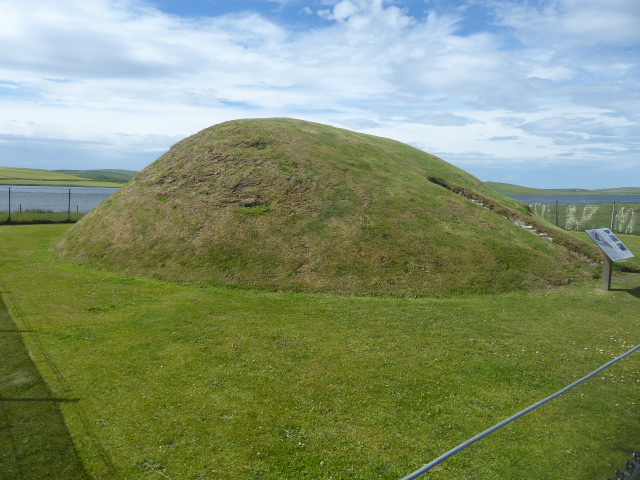
Entrance built for agile little people!
The inside, unfortunately the original roof has long gone. Which did allow the introduction of skylights, hence the good level of lighting.
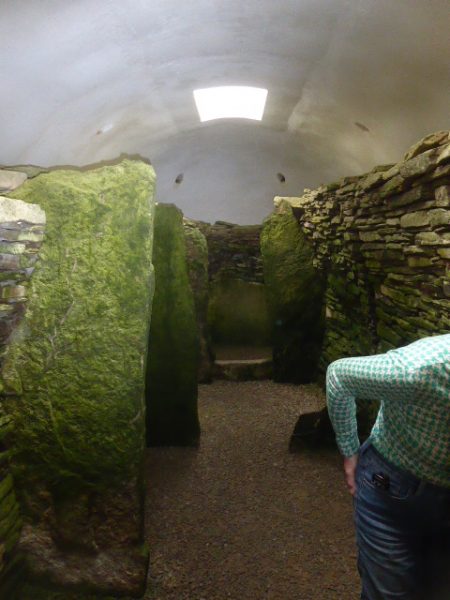
Looking the other way.
We then stopped there for quite a while, as Sue was baking a loaf of bread. Took longer than ususal, because instead of using a mix of brown and white flour, she accidently used a mix of brown and brown flour!
Whilst we were there, another car turned up with an American family, Father, large mother, enormous daughter and mamouth daughter. I hung around talking to them as they went in, hoping, rather wickedly, to photograph mamoth daughter getting stuck. Regrettably, she decided not to enter…….
Just round the corner is The Ring of Brodgar, a huge stone circle.
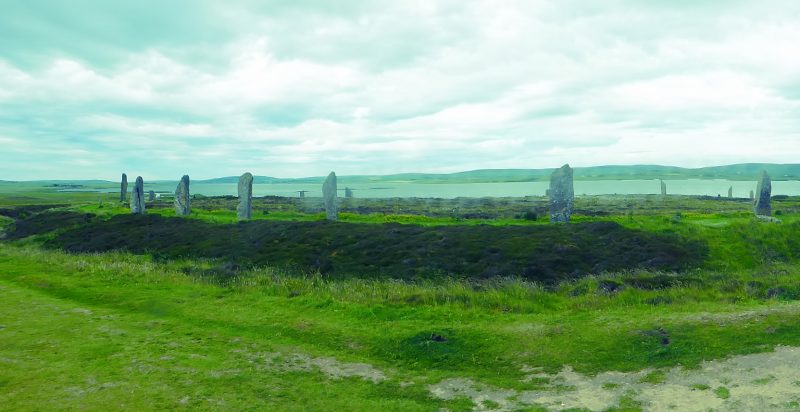
Unfortunately unable to go inside the Ring as the ground has been compacted as a result of climate change and too many people. A pity, but preservation is a must.
- Cont’dBacktracking from the Ring of Brodgar, past the Ness of Brodgar (astonishing, and will be the subject of an entry in a few days), to the Stones of Steness.
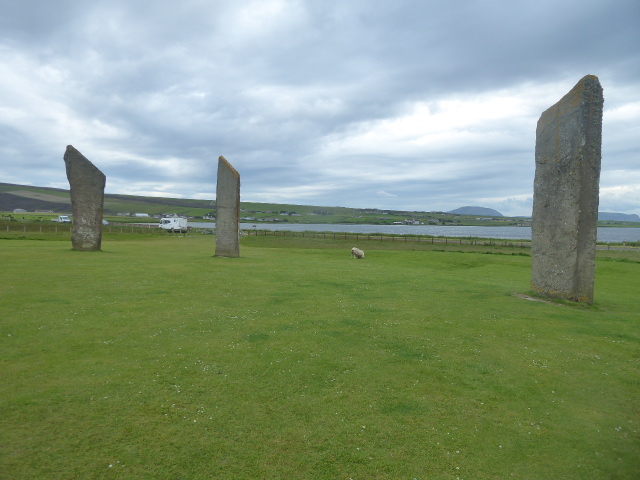
Not many left, but truly monumental.
A hearth fire pit, rather sanitised.
Apparently a farmer, fed up with having to plough round the stones, demolished some and incurred public wrath, and was stopped. Following this, there were two attempts to burn down his farmhouse. Jolly well served him right!
A short distance away is the village of Barnhouse, a Neolithic village of several houses.And, a short walk away, Barnhouse Stone.
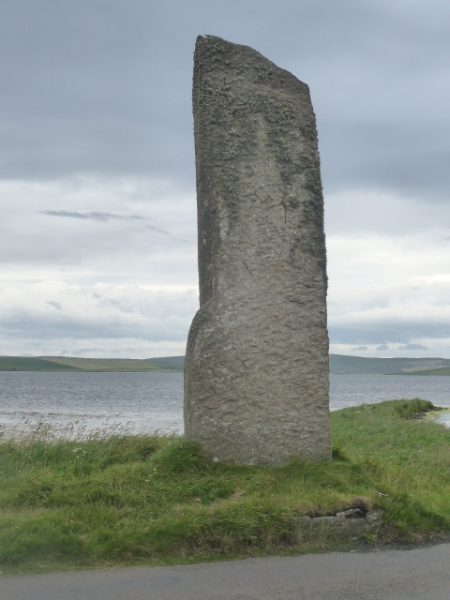
These long ago people, with only bone and rock tools, went to huge effort to transport and erect this, seemed the least I could do was to photograph it.
- Sat 22nd JuneThe longest day, yesterday, slithered past under blanket of cloud, as has every day we have been here. Very little fleeting sunshine, but fortunately little rain, and mostly at night.
Today we visited Skara Brea, a 5000 year old Neolithic village. Discovered in 1890, when a storm scoured the sand off the shore close to Skail House, the home of the Laird, who found and started excavating the site. Now cleared and available to view, truly fabulous.This building appeared to be used as a workshop and not for accommodation, deduced from the artefacts found within it.
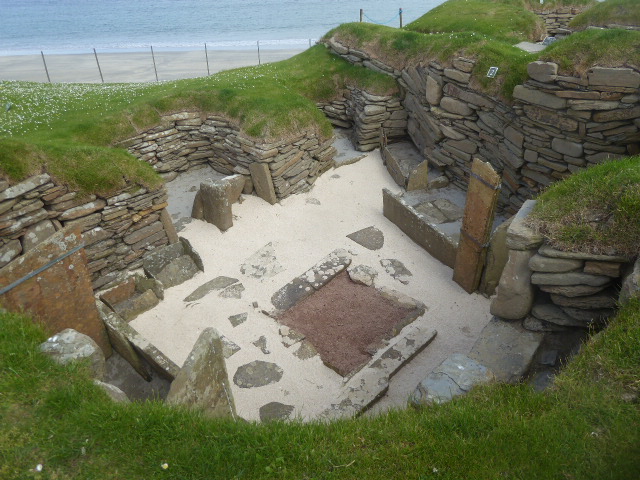
)
This shows stone furniture built into the dwelling – beds, dresser, storage niches.
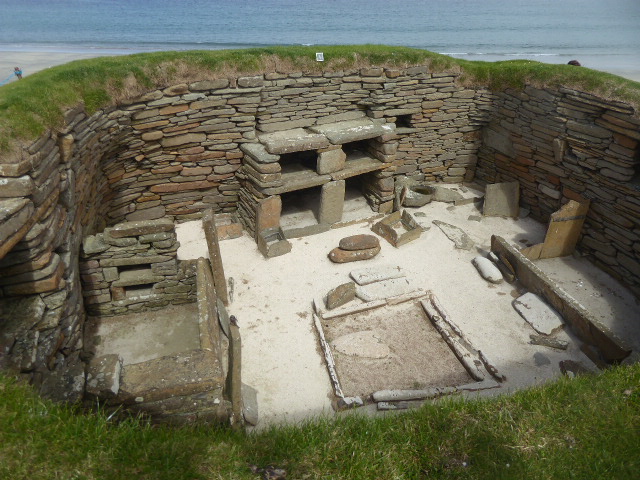
Again, it is known that there are earlier dwellings beneath these, but to investigate them would involve destroying these.
The most intact house has been roofed over with turf to protect it, but a replica has been built to visit. Unfortunately, too dark inside, photos didn’t come out. Also, lots of people in it. - Cont’dThence to Skail House, a short walk away, and now in the hands of Historic Scotland. Mostly accommodation to rent, but the main part available to visit.
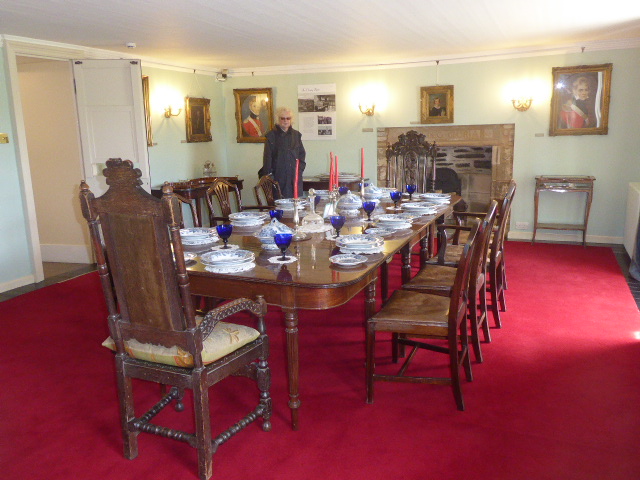
The lounge, on the first floor. A really nice bright room.
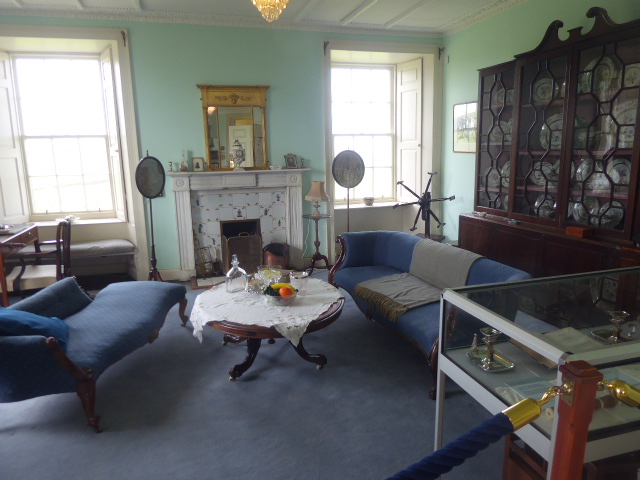
The lounge again, looking the other way.
In the grounds is a mobile eatery selling fish. Scallops for Sue, langoustines for me. Sue was reluctant due to the cold, but this photo was taken in a rare burst of pail sun. Didn’t last. Sue complained.
Next stop The Earls Palace at Birdsay. Built in the 1570’s by Robert Stuart, the illegitimate son James V, who was brutal, and disliked. When he stole some land, and the rent that went with it, he was beheaded, and the palace fell into disuse and ruin.
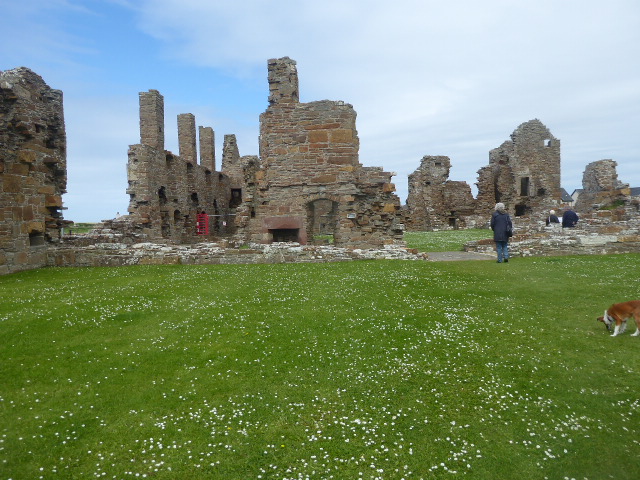
Birdsay letterbox.
Then on to the Broch of Gurness. Visiting this Broch underlines the astonishing similarity with the Nuraghes in Sardinia.
- Sun 23rd JuneDecided to have a lazy day. This morning I went round Stromness Museum. Interesting but not riveting. I mostly enjoyed the exploits of John Rae, a Stromness man who repeatedly explored huge distances across northern Canada, discovering the last link in the North West Passage, and also found the Ill fated Franklin expedition.
Weather this afternoon improved dramatically, cloudless sky and no wind. Goodness, felt like summer!!
Just for the record, I took a photo of the Stromness bay from our campsite.Now evening, clouds rolling in, wind back, decidedly chilly. Has to be said, we didn’t come to Orkney for the weather….
Sue baked another loaf of bread. This time 50/50 white and brown flour. Worked much better. - A day of crawling
First to Cuween Hill Chambered Cairn. An easy walk up Cuween Hill, open the little box to retrieve the handy torch supplied by Explore Scotland, and then a crawl into the cairn.
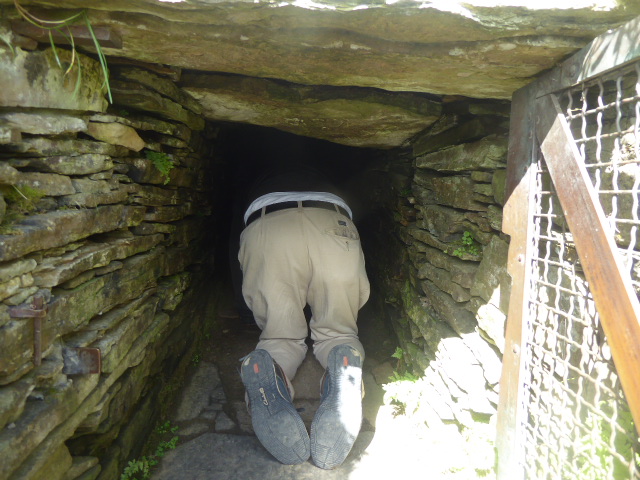
Inside.
And then another crawl into one of four chambers off the main chamber.
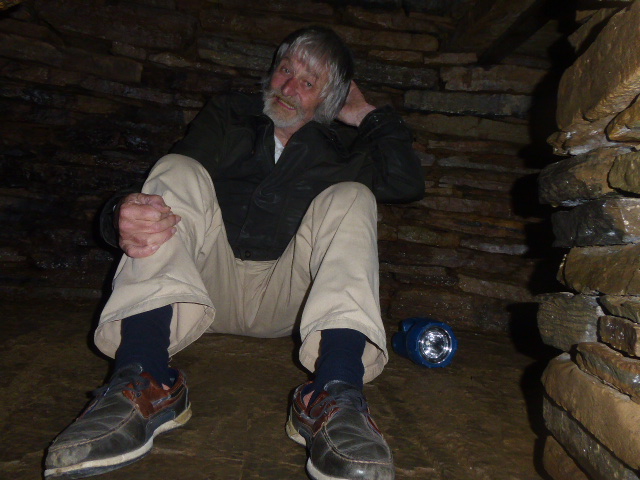
Sue exiting.
Between 5200 and 5300 years old, a lot of dog bones found inside, dating around 500 years after the cairn was built.
- More crawling.
Second stop Rennibister Earth House. Much later, around 400BC, during the Iron Age. This consists of a passage leading to a single chamber, and when discovered contained the skeletons of 6 adults and 12 children, although it is thought they were deposited later.
Entrance was through a hatch and down a ladder. All this in the middle of a farmyard!I crawled along this passage – at the time, I didn’t realise we were in the main chamber, and this was the original, now blocked off, entrance passage. It was muddy, very tight, led nowhere, and I had to crawl out backwards. Trousers need washing, shoes need cleaning…..
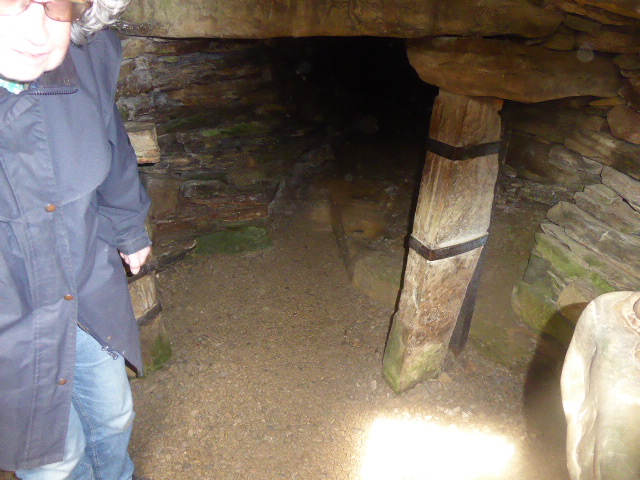
- Crawling declined
From Rennibister, a short drive to Wideford Hill Cairn. Parking was most of the way up the hill, so of course I had to walk up to the top.
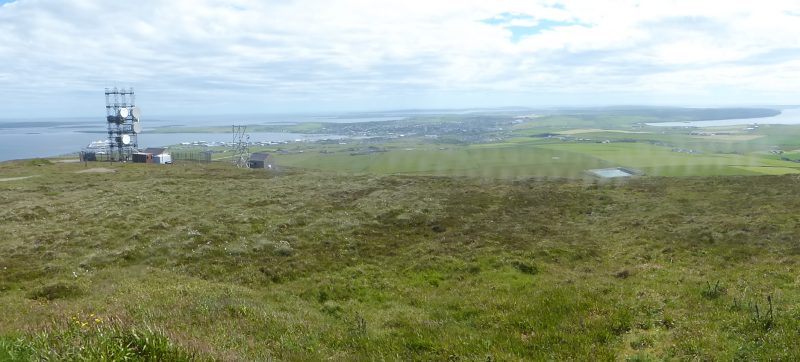
The other way, back towards Stromness.
There was then a longish walk round and down the hill towards the cairn, which Sue found really hard going, complaining about her arthritic hip and knee. But she made it.The cairn. This shows the original entrance, now access is through the roof down a ladder. Unfortunately, the battery in the provided flashlight was flat, but I had taken my “cyclop”, a head torch.
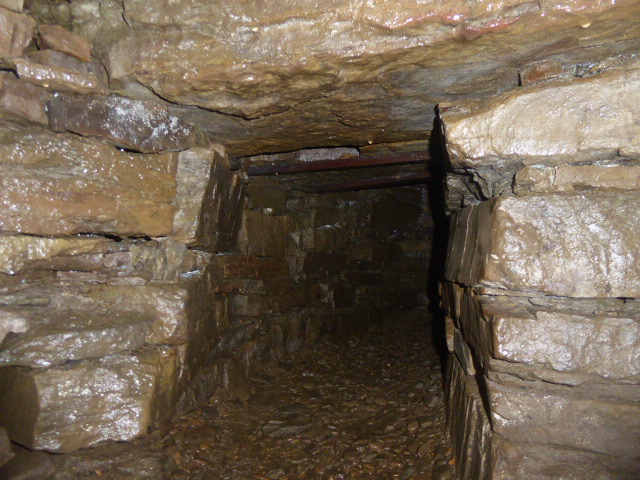
Clambering into the main chamber down the ladder was very tight, but OK. There was not much space, and there were four side chambers. The floor had about an inch of water, the passages were tiny, and I chickened out, just taking photos of the four passages (the first above). The others…….
This one, the original entrance.
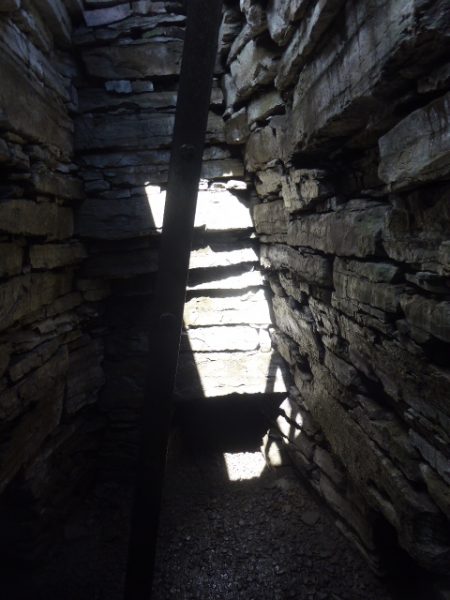
After her difficulty getting here, Sue decided not to clamber into the cairn, and frankly she didn’t miss much, especially after the much more accessible Cuween Cairn.
Resting part way back to the car park.
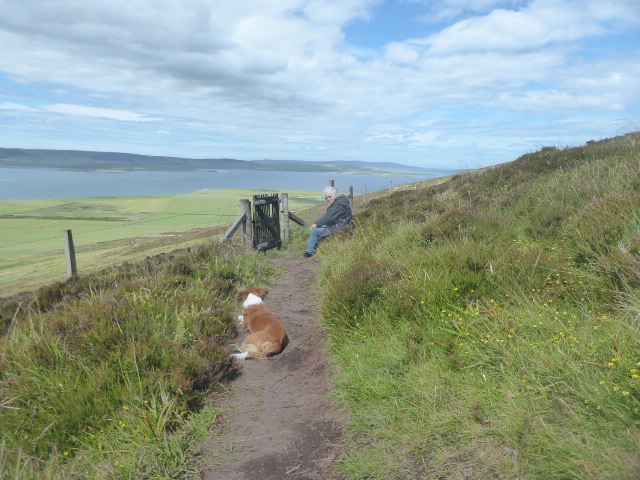
The afternoon, after our arrival back in Stromness, was nearly as nice as yesterday. So, we sat outside, had our salad starter outside, and a big black cloud rushed up and plonked itself over the sun, and stubbornly stayed there. Until we gave up and went inside. When it went, and now a really pleasant evening.
- Tue 25th JuneOur stay at Point of Ness campsite in Stromness has come to an end, so we upped sticks and moved to Kirkwall, where there is free motorhome parking in the city centre. Main attraction the Earls Palace and the Bishops Palace, both ruins.
The Bishops Palace was built around 1100, but extensively modified in the 1600’s.The centre of the palace.
The Earls Palace was built by Patrick, Earl of Orkney in 1606, the son of the Earl who built the Earls Palace at Birdsay, the guy who ran up huge debts, and was beheaded. His son enjoyed a lavish lifestyle, ran up huge debts and was beheaded. This time for treason. Seems to run in the family.
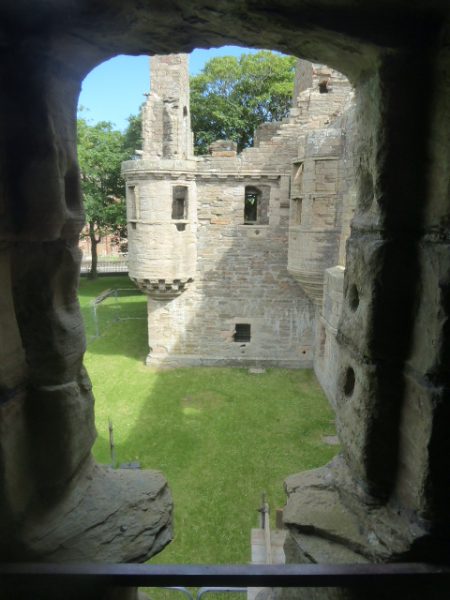
- Cont’dEverywhere we went, we were dogged by tours from a huge mobile housing estate cruise ship moored in Kirkwall harbour. I overhead one of the guides saying that Kirkwall is the most visited destination for cruise ships in the UK.
We also visited Kirkwall cathedral, yet another church/cathedral dedicated to St Magnus. Orkney is really keen on St Magnus, maybe because he was murdered by his half brother in 1117. Long memories, these Orcadians.
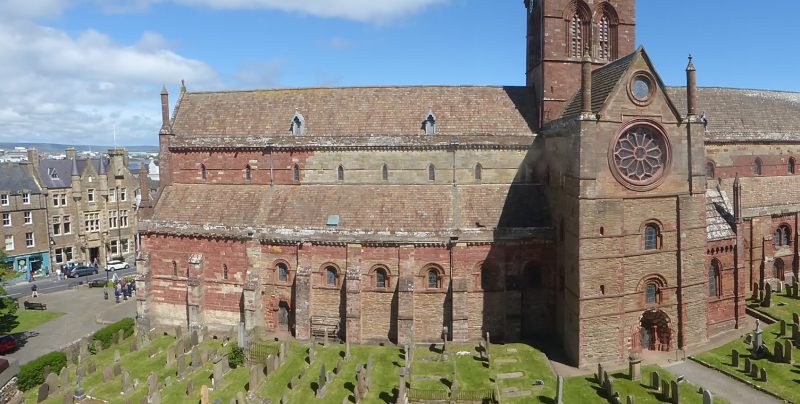
The cathedral, viewed from the top of the Earls Palace tower.
Building started in 1137, is stolidly Romanesque, very lofty and imposing, and seemingly little altered over the centuries. Further south, I would have described it as solidly Norman.
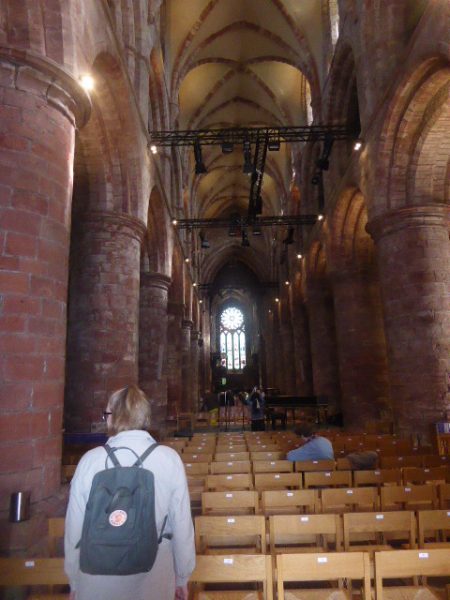
After wandering around Kirkwall, which is not very big, I revisited the museum, only the upstairs, which dealt with Pictish, Norse, medieval and later history, including of course WW2, and the British fleet at Scapa Flow.
I was particularly taken with this microscope, hand made by the father of the person who donated it to the museum. He even hand ground the lenses himself.
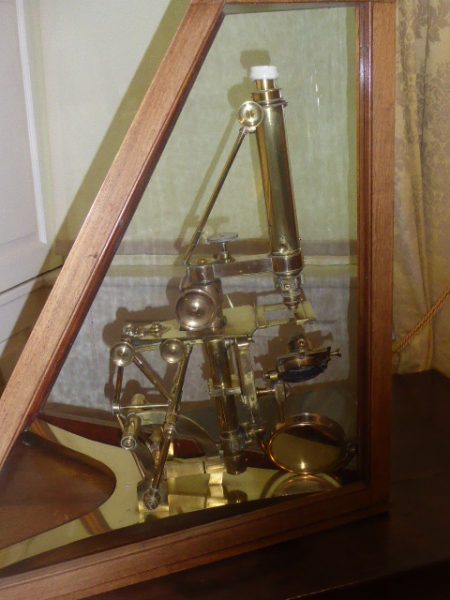
- The Ness of Brodgar
So pleased we decided to extend our stay specifically for this visit/tour.
A general view over the main dig site.The buildings here went through multiple rebuilds over a period of 500 years, and buildings were put on top of older buildings. They were built on mitten, waste material, much of it organic. Stone walls, and astonishingly, stone roofs. Far too heavy, and much evidence of subsidence, and subsequent repair. Some of the later repairs were described as very shoddy, it is thought that the occupants no longer had the resources, as the country was changing as a result of new ideas and technology, particularly the introduction of bronze. Perhaps the belief system that held this society together for 500 years was also changing, although there is ample evidence that people did come back later, but were very careful not to destroy or disturb the remains.
This building, a little way away from the main site, only ever had this one dwelling, which is very well constructed. The other side, not visible in the photo, is what is dubbed “The Great Wall of Brodga”, six metres thick. Although not very high, it is thought was originally much higher, as steps have been found set into the wall. The wall was not defensive, as it curled round the end of the building, and stopped abruptly. It is thought to extend right across the Isthmus.
- The Ness of Brodgar 2
- The Ness of Brodgar 3At the far end of the site, another building, again no evidence of being built on top of an earlier building. The use of this building is a mystery, as it shares a lot of similarities with Maisehow, except it has a hearth. Maisehow is a burial chamber, a hearth suggests a living space. However, it was beautifully constructed, and unlike other buildings, all the stone came from one quarry.
Just look at the size of that stone in the foreground!
That wall was constructed with stone and bone tools…….
So much care taken with that corner.
- Thu 27th JuneNow teleporting from the Stone Age to the 20th century, and the long drive home. Tried to catch last nights ferry on standby, but failed. So, early start this morning for the 0630 ferry.
We have both thoroughly enjoyed Orkney, and decided we want to come back again and explore some of the other islands. Hopefully in less than 27 years!
There hasn’t been much sun, almost constant wind, but very little rain, and that has not fallen whilst we were out, so not a problem. - Fri 28th JunYesterday, easy drive to Stuart’s at Berwick upon Tweed after our very early start. Windscreen wipers packed up, found as we drove through several squalls of rain. Not a blown fuse. Nuisance.
Nice evening sharing a takeaway.
Today, drove to our convenient friendly CL near Newark, via the organic farm shop in Piercebridge. As we left, saw a sign for the Roman bridge at Piercebridge, so had a look.
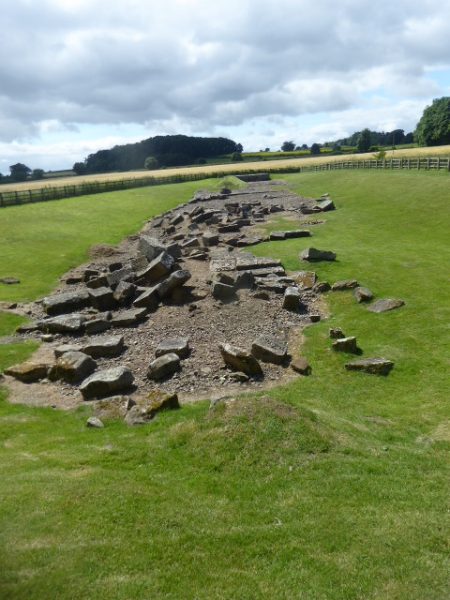
Hmmmm…..
Now the dashboard air fan has stopped working. Checked the fuse, not that. Drat!
Just seen a hare, fortunately Josie didn’t.
Know we have come south, horrendous traffic jam on the A1.

